I'm an artist and designer based in Bothell, WA. I graduated with a BA in Interactive Media Design from the University of Washington in 2022 and have worked as CERT Tester at Xbox and most recently as a Car Researcher at Turn 10 Studios! I'm passionate about PC games, art, and automotive history. Please get in contact with me if you'd like to chat!
Skills
Digital art & image editing, character design, C# scripting
Software
Clip Studio Paint, Photoshop, Microsoft Visual Studio, Blender, Unity, 3DS Max, Microsoft Office Suite, Azure Dev-Ops, Perforce Helix P4V, Jira
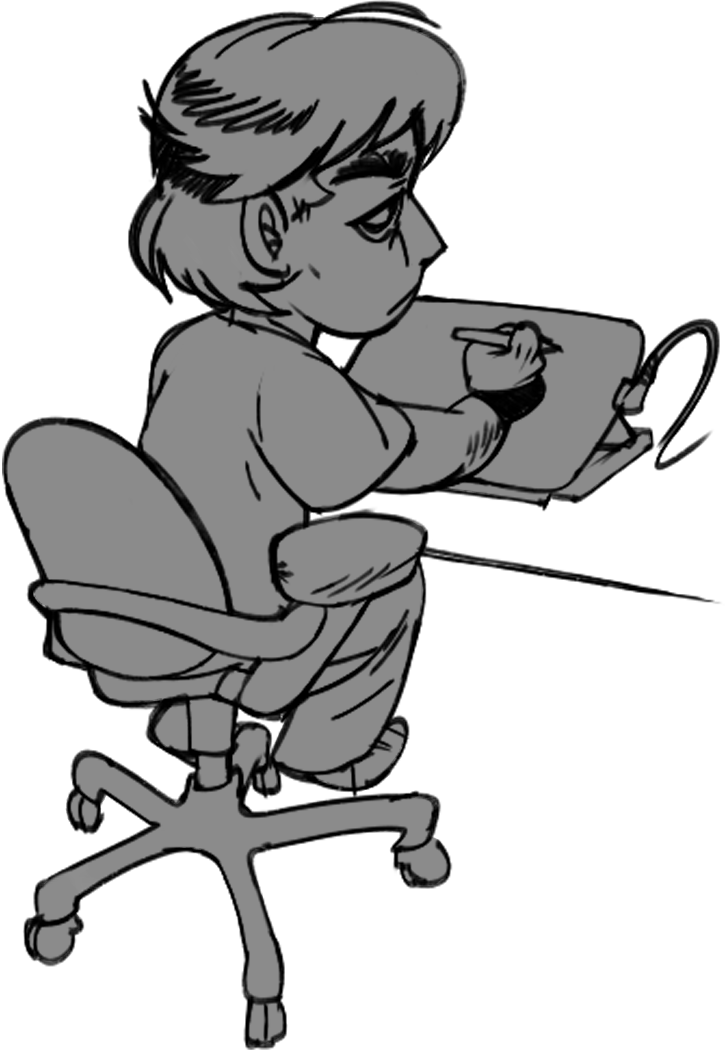
Projects
Rise - IMD 2022 Capstone
Rise is a 2D challenge-platformer built in Unity, designed and developed over a span of six months. Provided art assets, animation work, gameplay design & development, and more to re-orient the existing work into a playable game demo in the final two months.
"Kurobune" - IMD 2022 Independent Study
Kurobune is a personal design challenge around which I centered an independent study course, lasting a single quarter. This early ideation involved the creation of character designs, level and story concepts, scene storyboards, and a game design document.
Character Design
Collection of character designs that I've done, personal and commissioned with process photos included.
Assorted Illustration
Beyond work, I spend plenty of my free time on personal artwork and sometimes commissions. I'm always aiming to hone my skills and conquer new challenges with every piece! If there are any images here that you'd like to see in original resolution, send me an e-mail and I'd be happy to oblige.
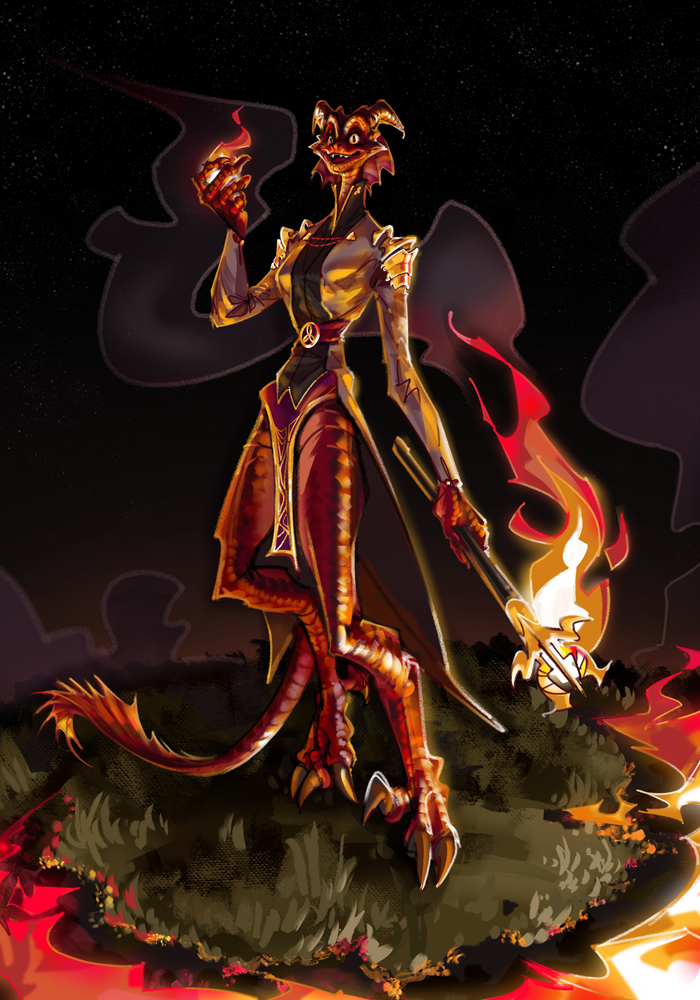
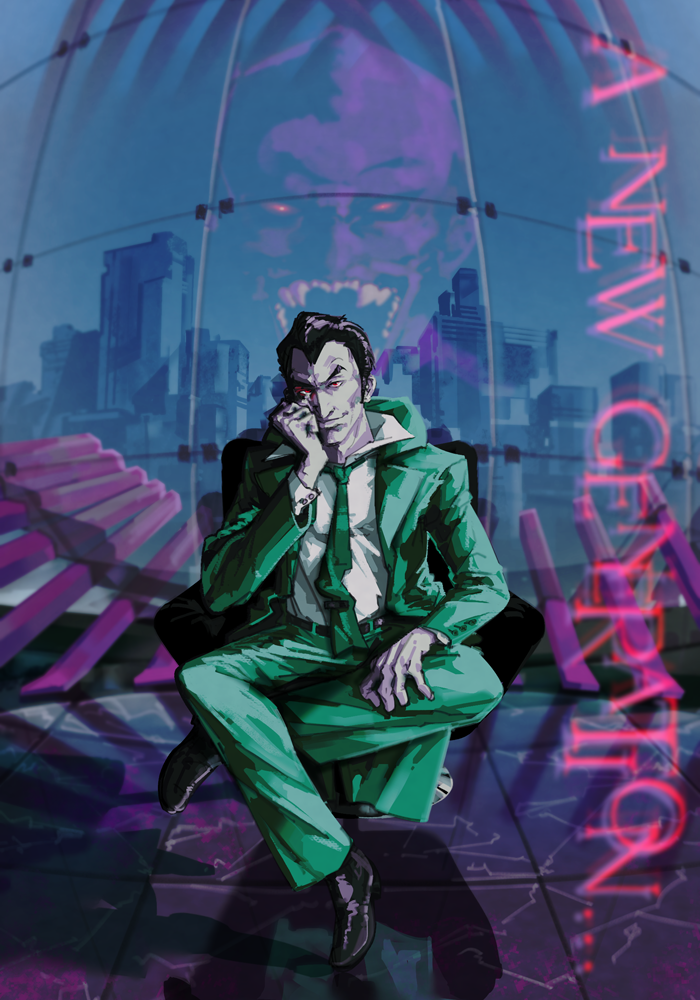
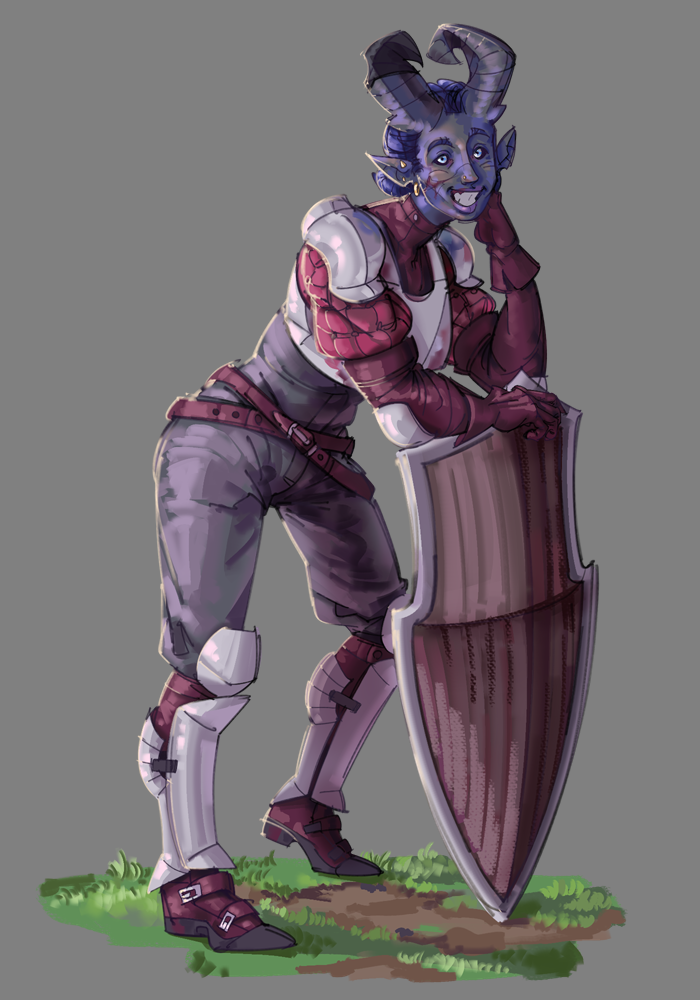
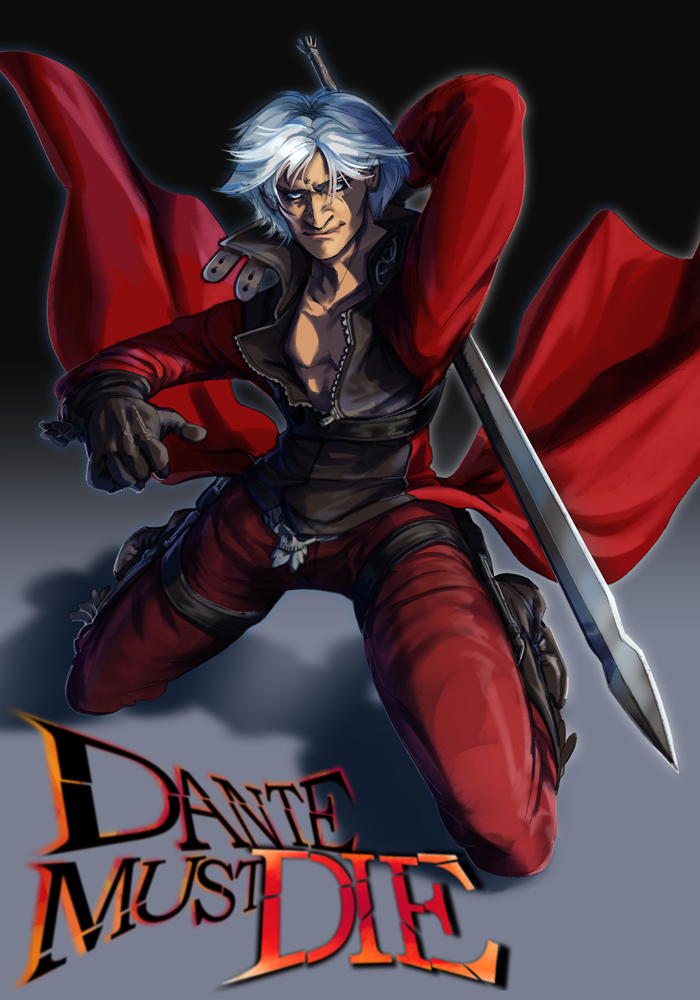
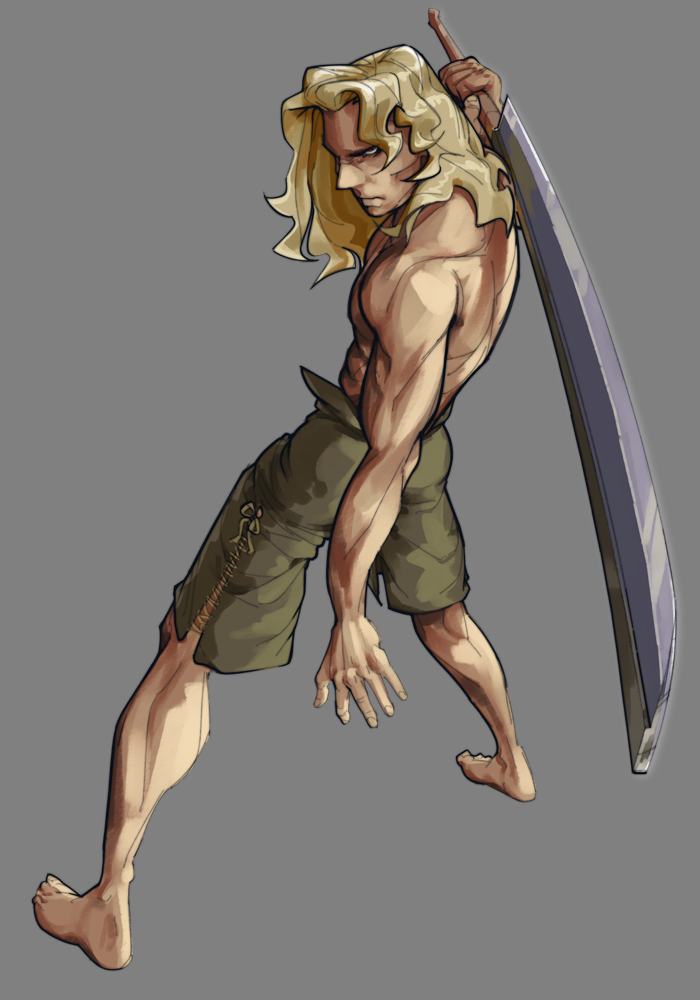
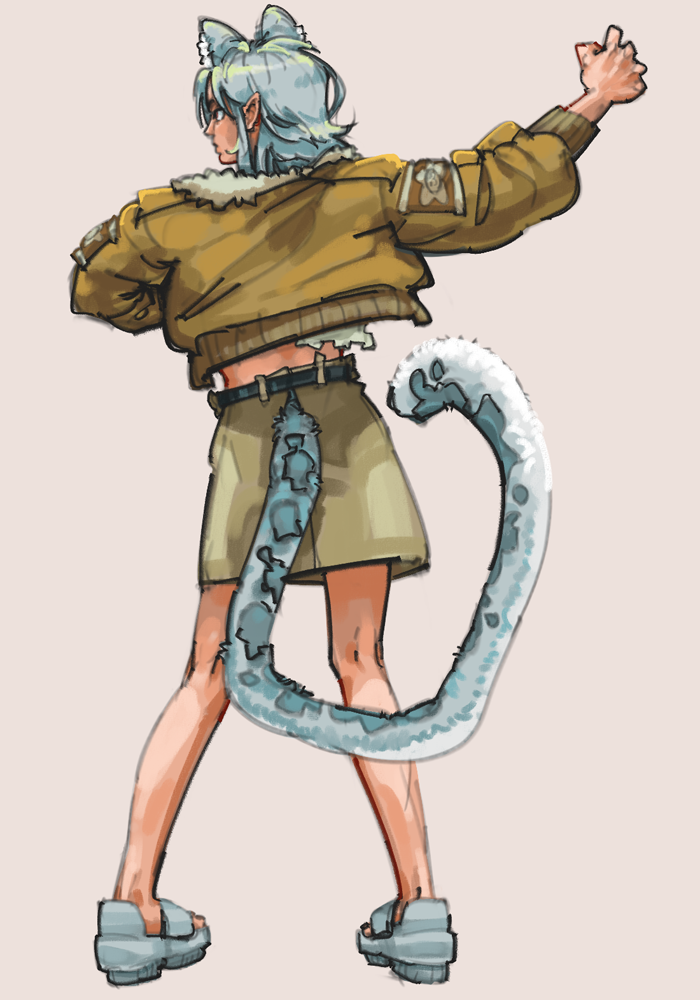
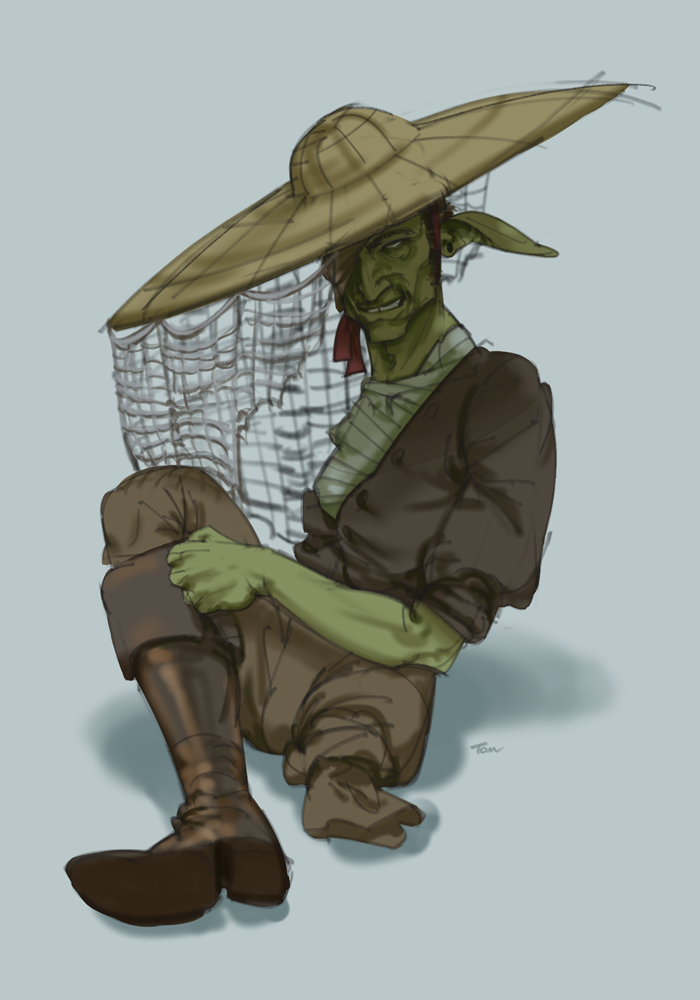
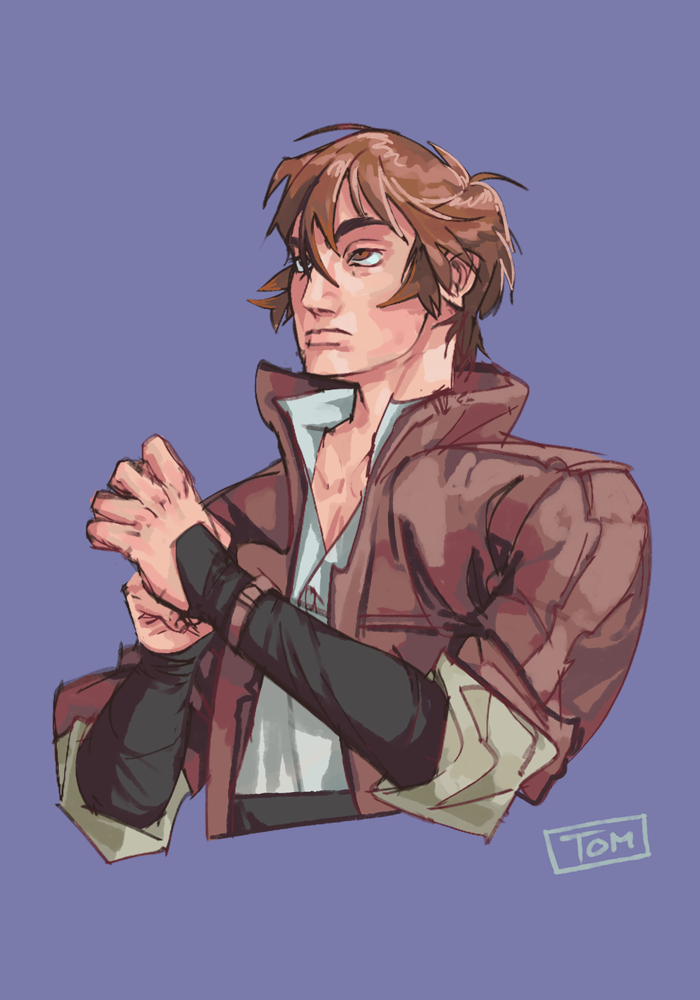
©2025 Thomas Novak
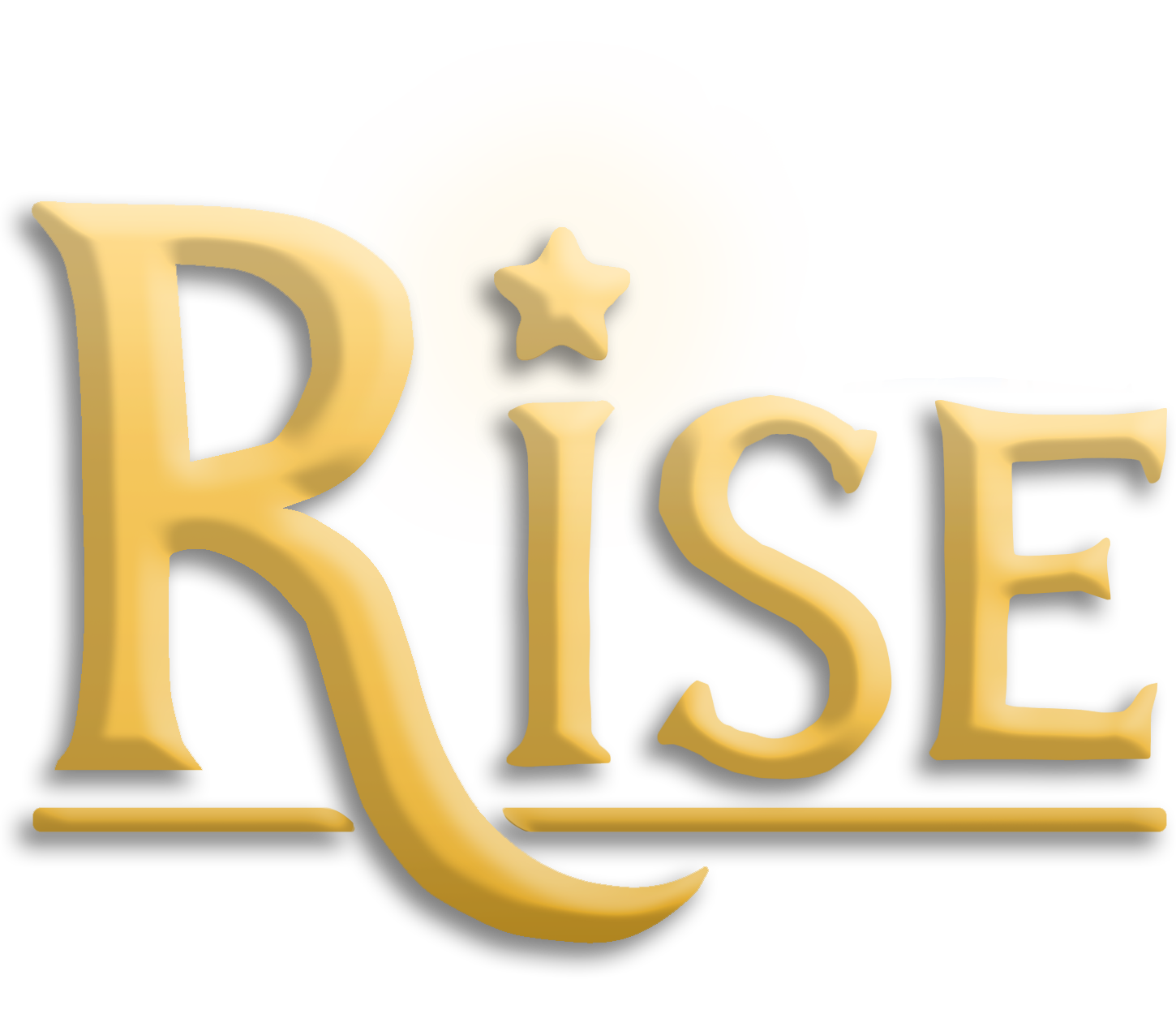
Rise is a narrative 2D platformer set in a mysterious fantasy world. The player embodies Lyra, a young avian girl who falls from her home within the clouds and must explore the unknown world below.
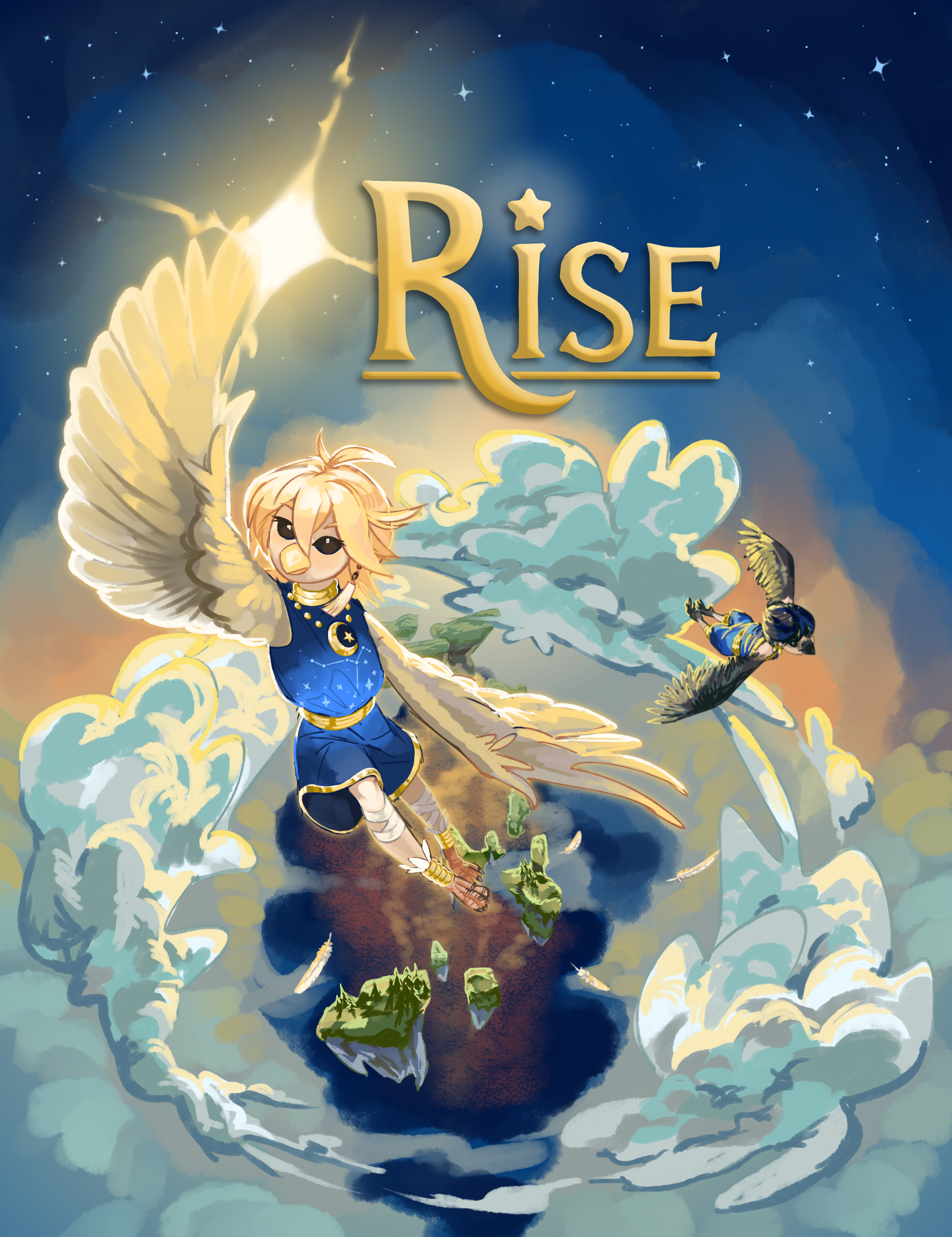
Platforms
Contributions
Duration
Rise is a game demo created by our team of six, Downpour Interactive, as a capstone project for the 2022 Interactive Media Design program at the University of Washington Bothell. Rise was conceived as a 2D narrative exploration/platformer title focused on an intimate character-driven story. The team took heavy inspiration from similar art & narrative-focused indie titles such as Ori and the Blind Forest, Celeste, and Seasons After Fall.
The protagonist Lyra is a young girl in a society of bird-people, their lives secluded upon islands floating in the clouds. She and every young student train for their manifest, an important cultural coming-of-age ritual where she must place her own constellation of stars into the sky. Completion of the manifest means one has graduated into their "adulthood" and may truly join society, but to fail is a mark of shame.
Despite her confidence and the pressure of expectation, Lyra fails her manifest and falls down beneath the clouds- banished by her people and left helpless in the unfamiliar world below. She seeks find her way home again, meeting new people, overcoming her fears, and becoming a better person herself.
The full conception and development cycle went from January up to the IMD exhibition in June of 2022. As part of the course, the first three months were primarily dedicated to design and planning whereas the latter were spent on full development.
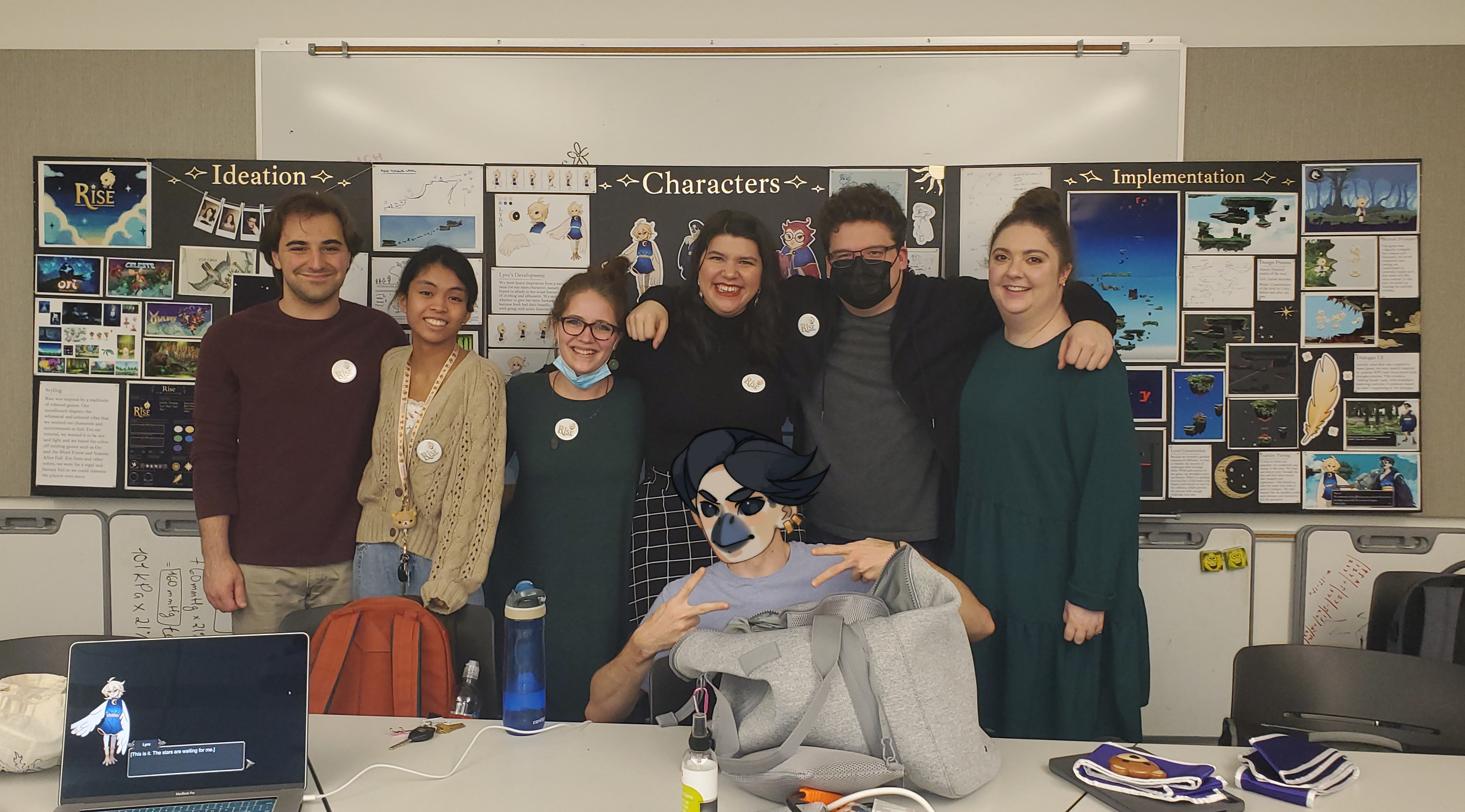
Character design
My first task was to design additional avian students to accompany the protagonist in this introductory scene. I started with the team's clearest concept, an avian boy who would serve as Lyra's student "rival." Where Lyra was designed to be bright and soft, pulling inspiration from doves, we designed this new rival after a raven- dark feathers and sharp features to emphasize the contrast.
Lyra's design was still being revised, so this served as a great chance to experiment freely and work with the lead artist to define a cohesive look for the students.
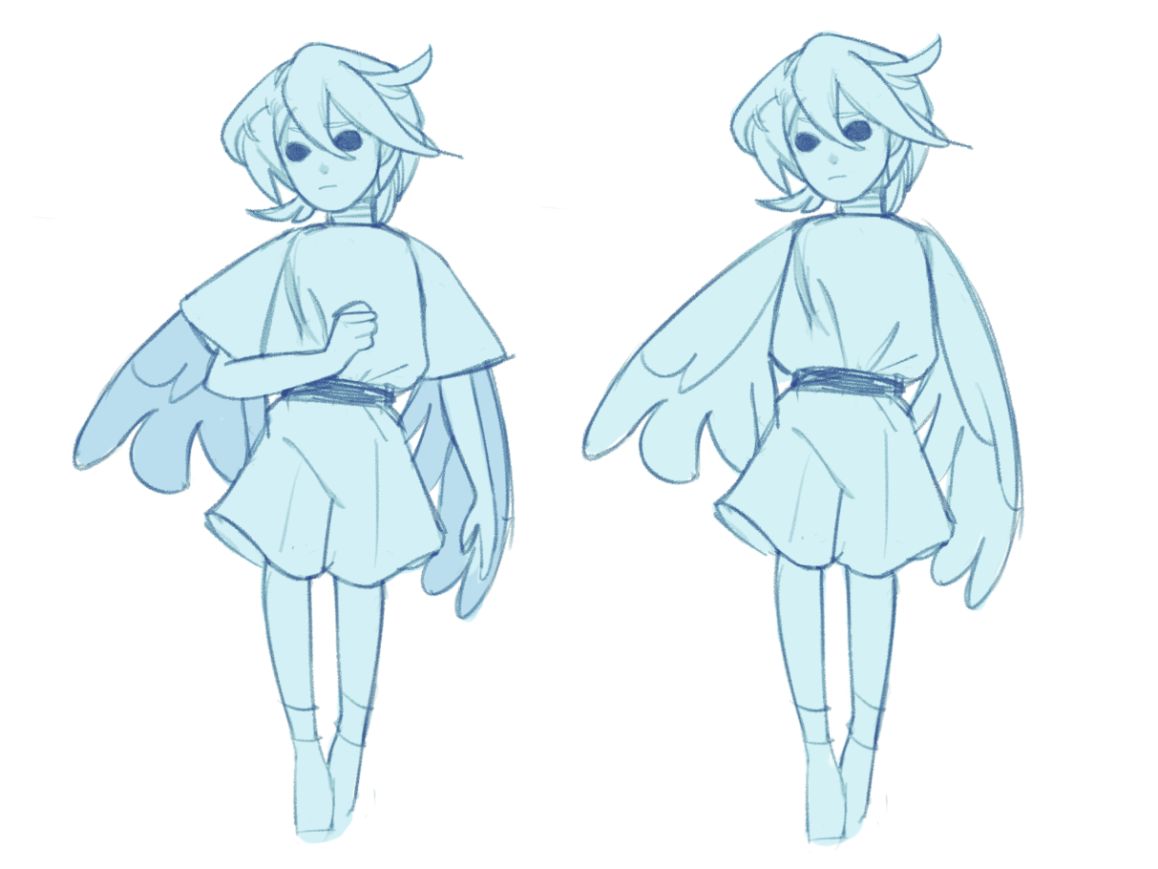
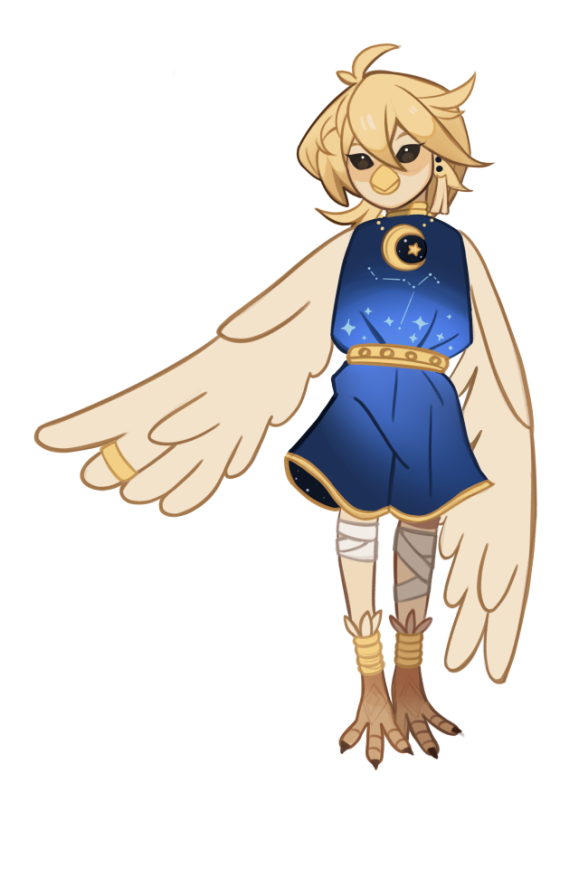
Early sketches for Lyra initially presented her with fewer bird-features (Artwork by Kyley Ching-Hsu)
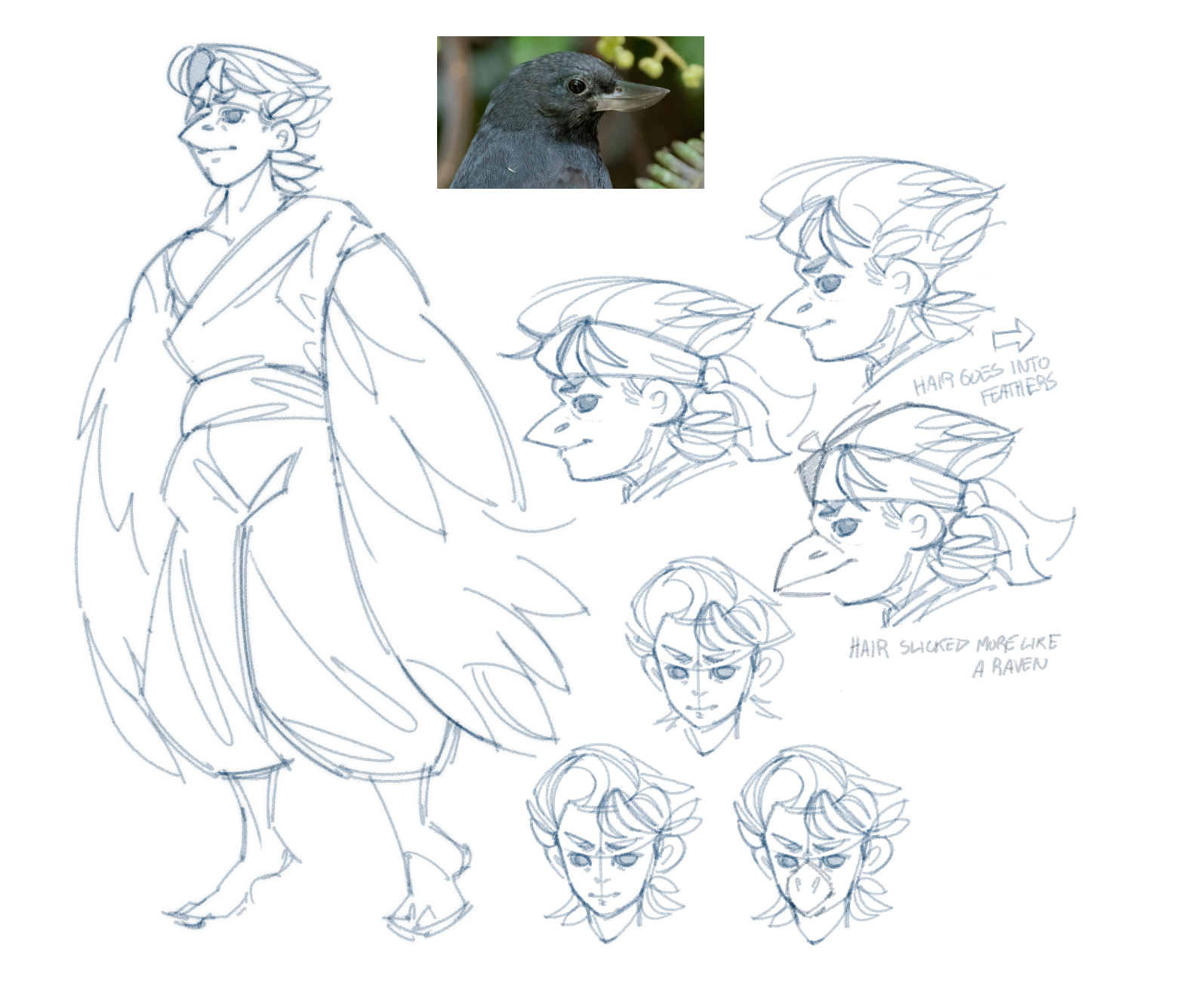
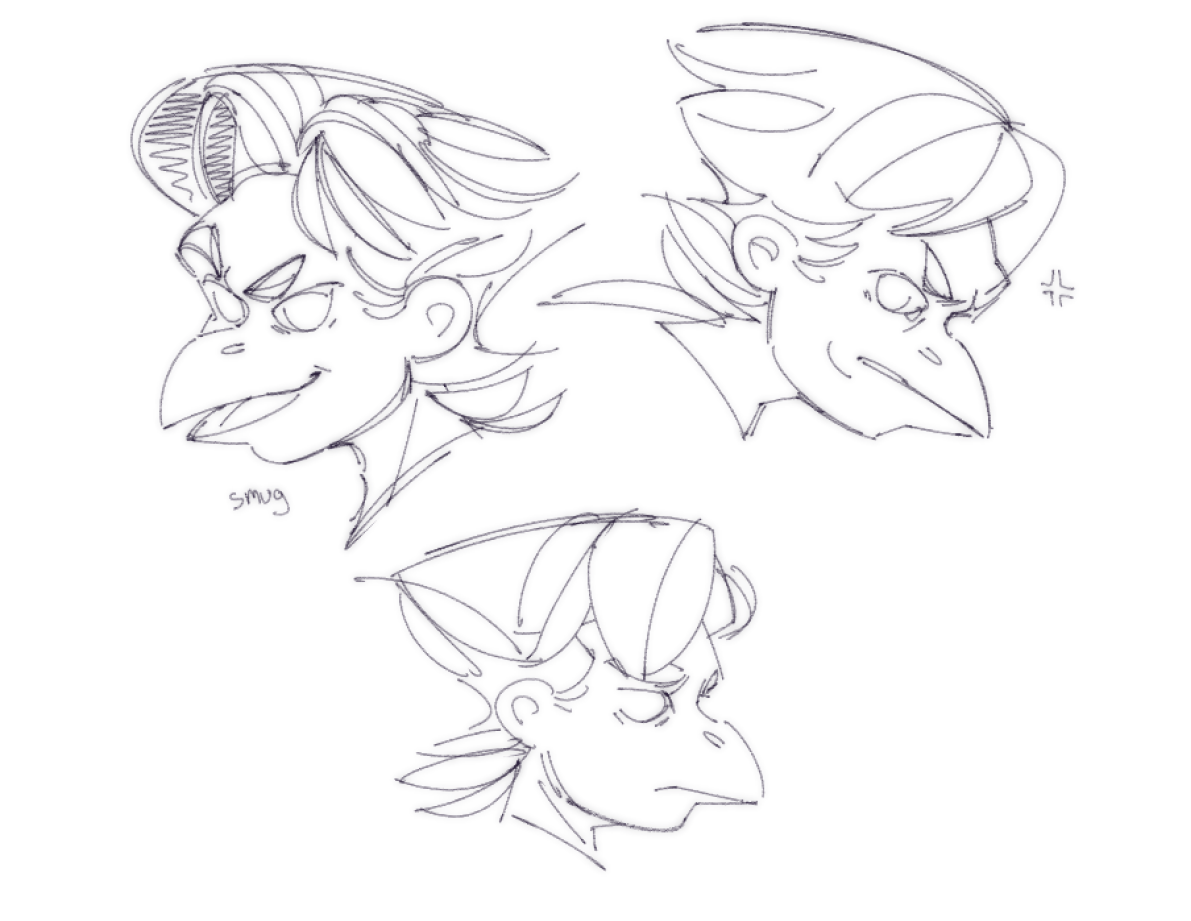
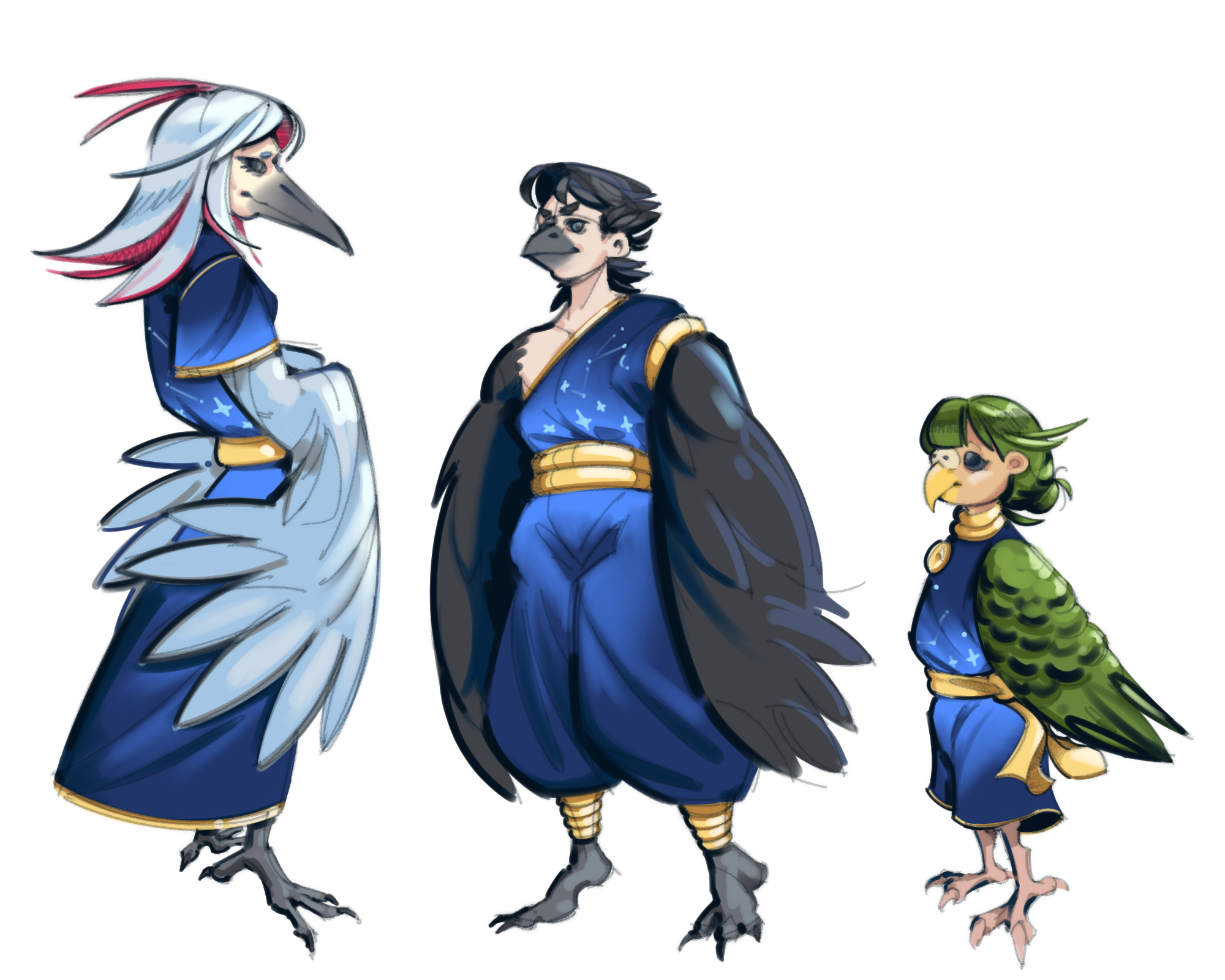
The older student on the left was cut for time, the other two were approved for finalized portraits and animations.
Rhys's personality was already defined beforehand, allowing for some guidance through the early ideation. I wanted to make sure that he always looked smug or irritable in his expressions. The first colored sketch got some good feedback and I made revisions to really push the haughtiness of it, giving him sharper shoulders and cleaning up the "hair" feathers to emphasize his prim, manicured look.
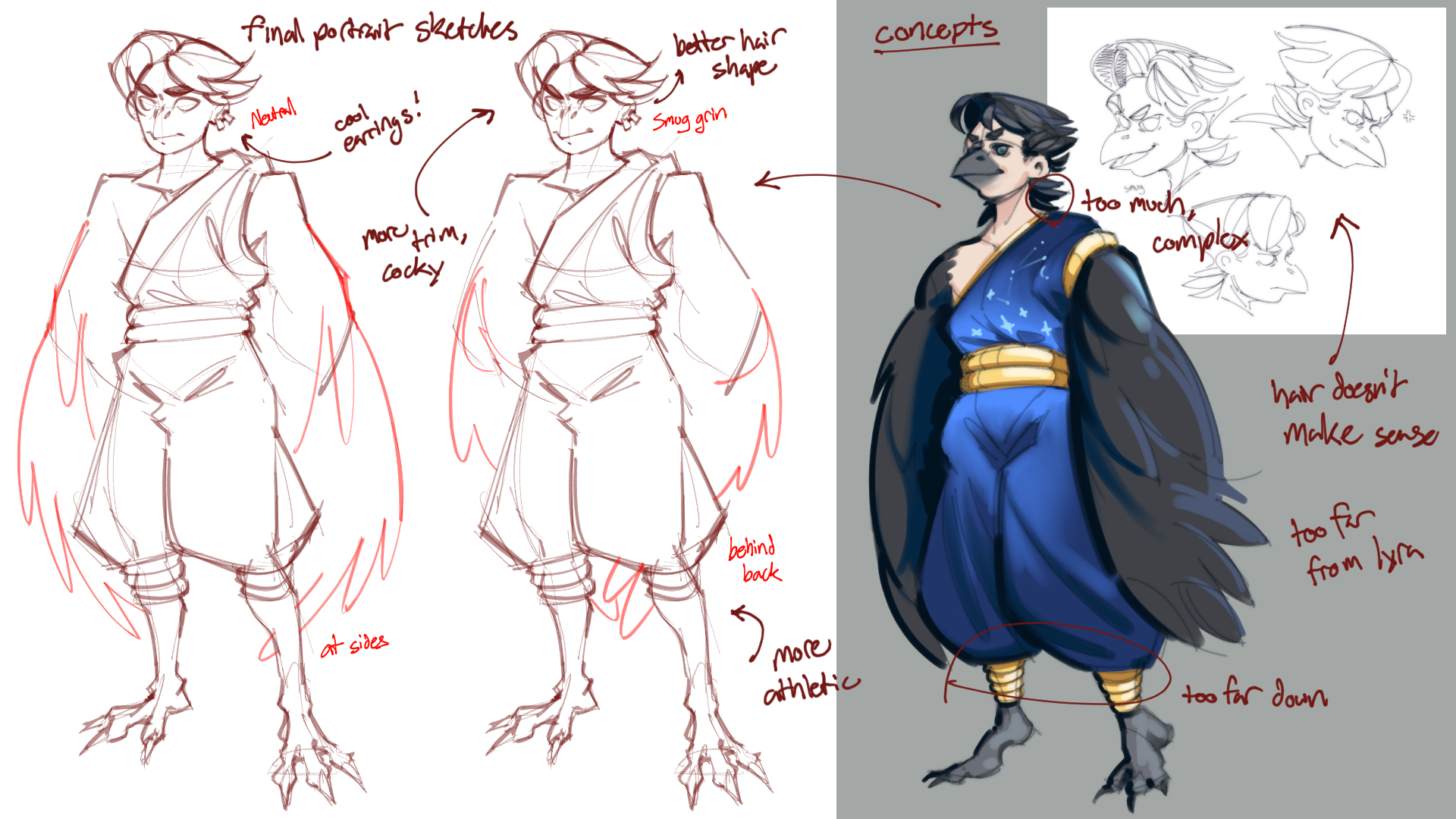
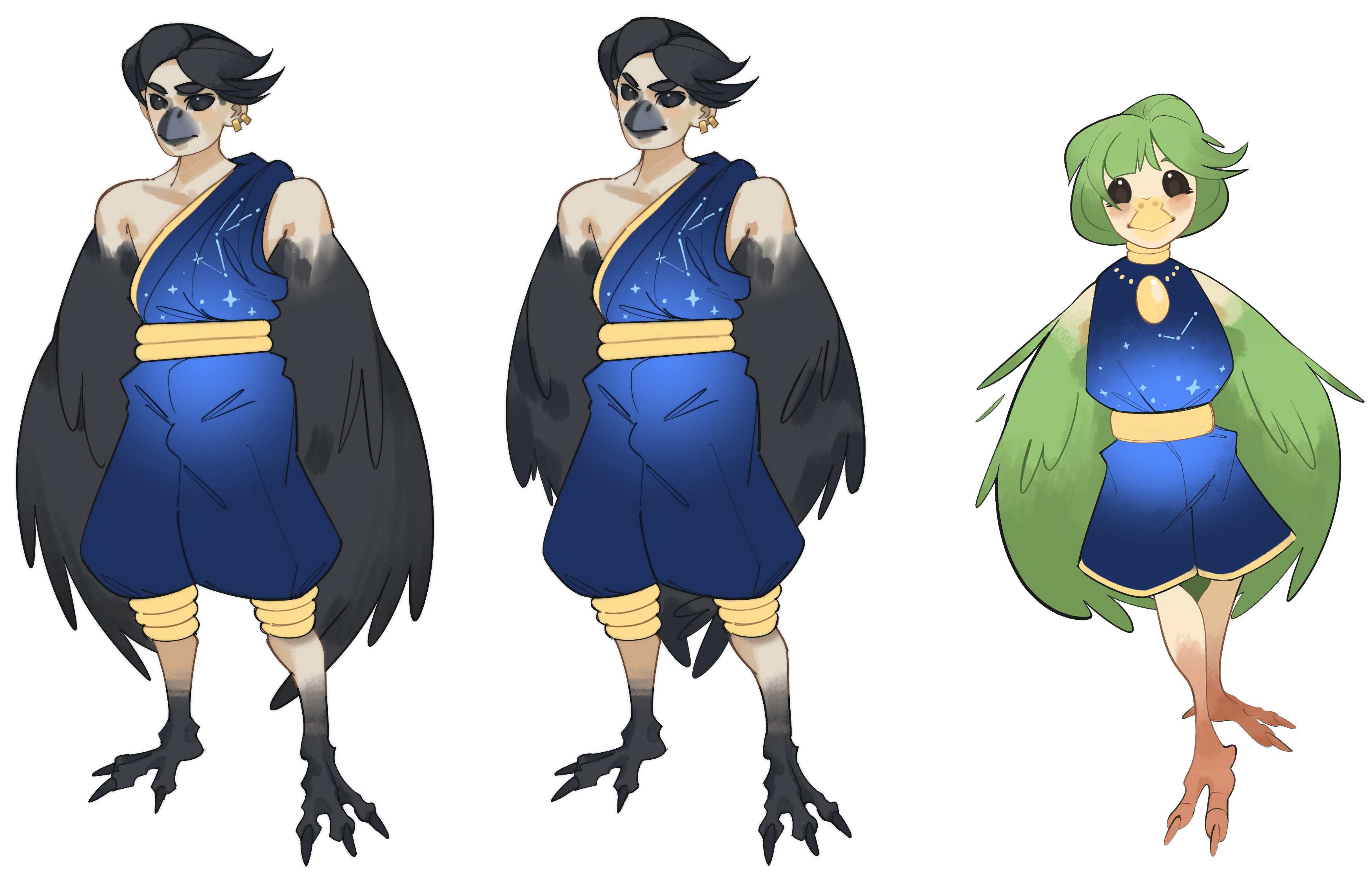
Final portraits - Rhys (neutral), Rhys (smug), Alina (neutral)
Animation
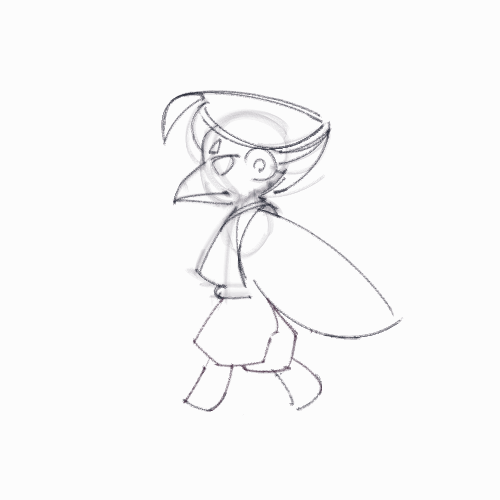
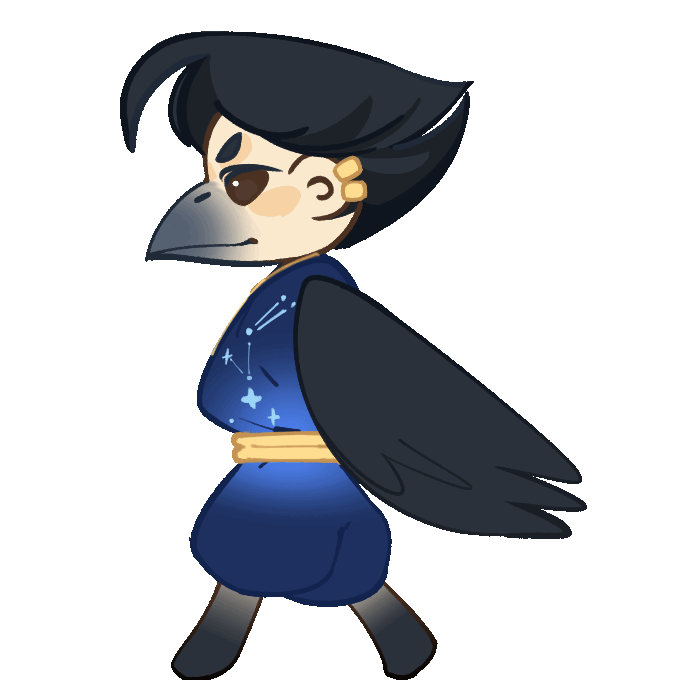
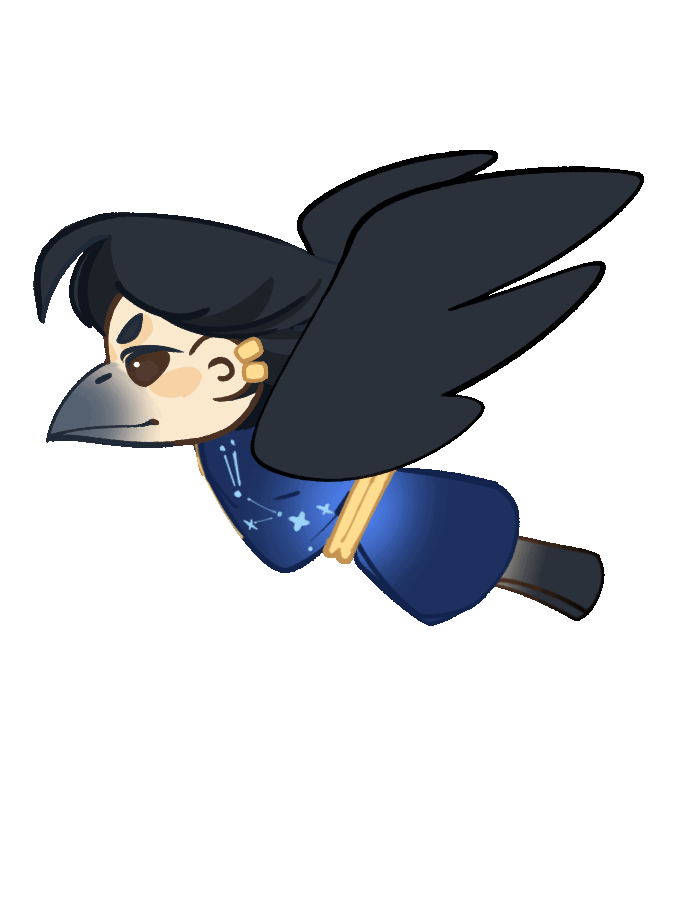
Rhys animations - Walk (sketch), Walk (final), Fly (final)
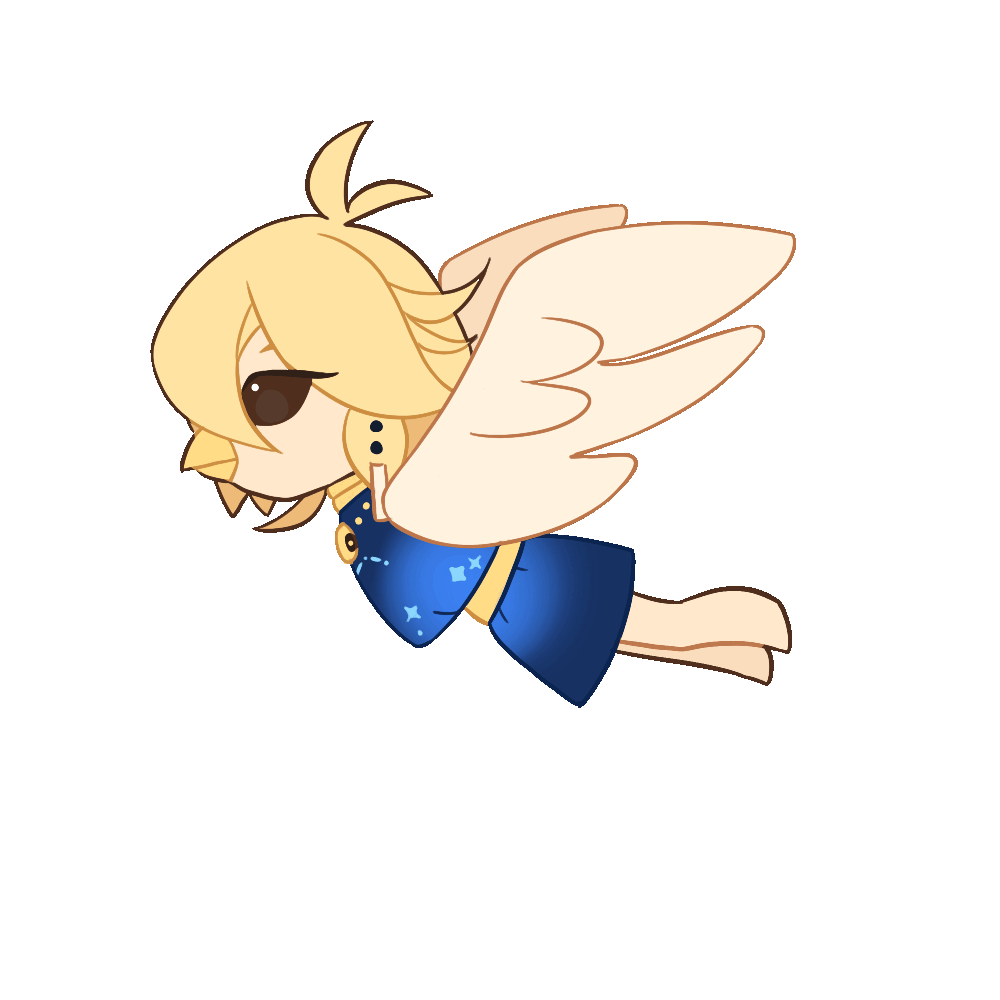
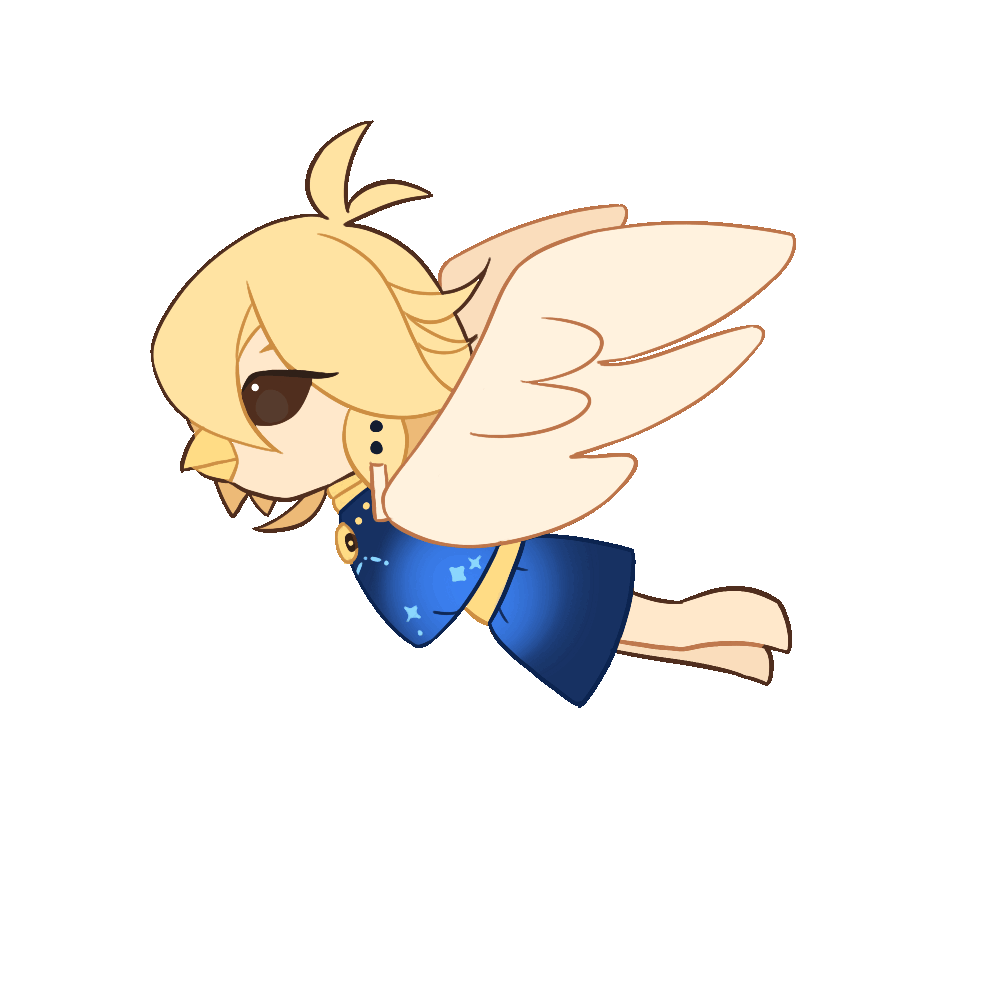
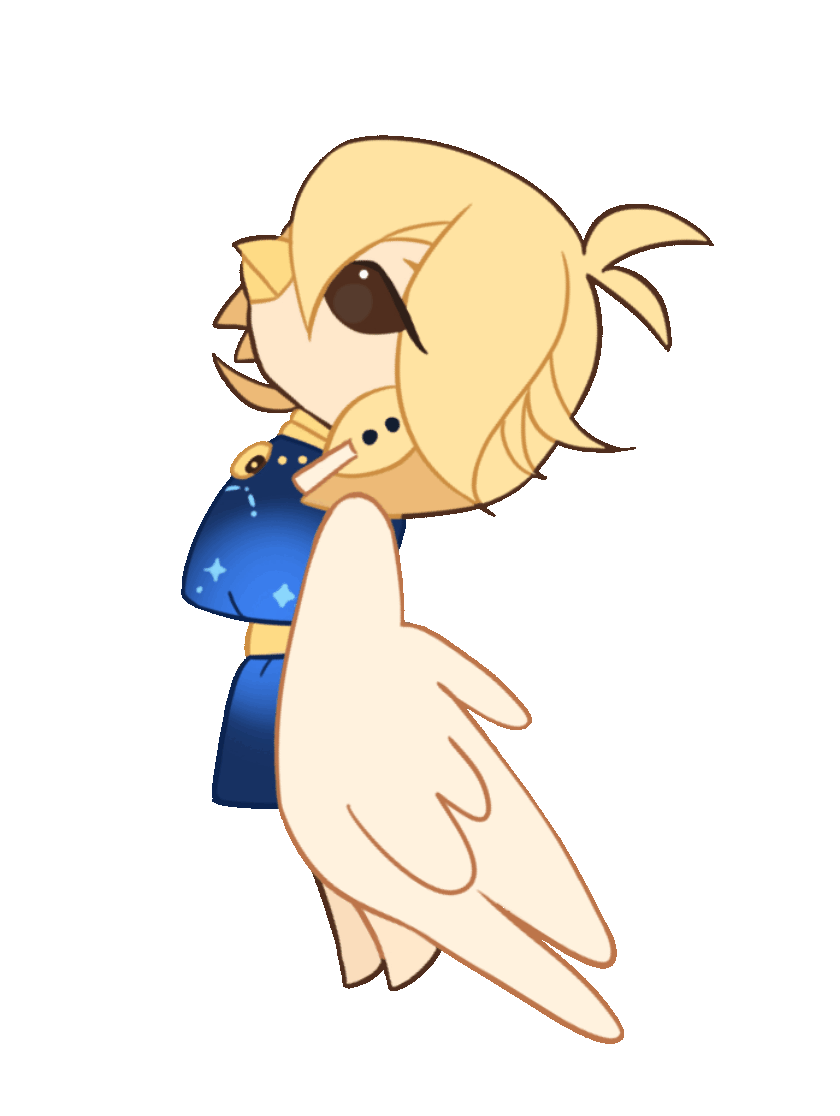
Lyra additional animations - Fly (final), "Dash" (final), Star-boost (final)
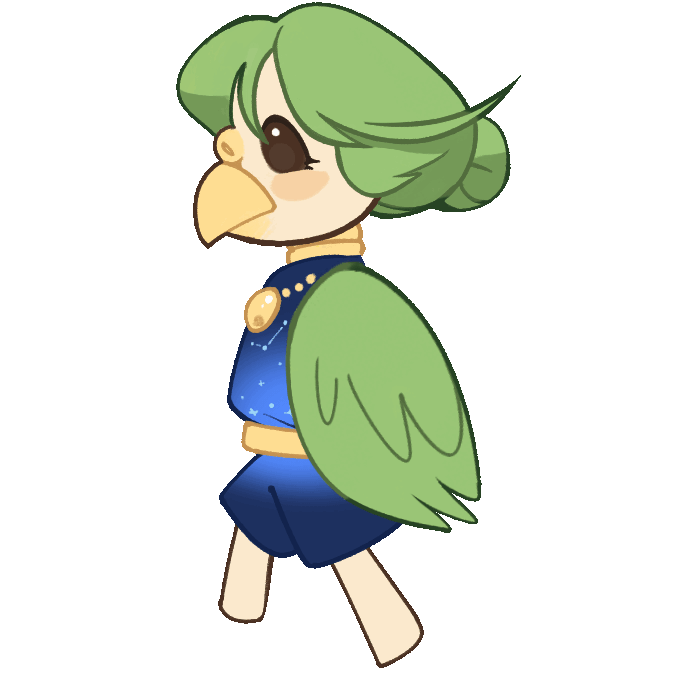
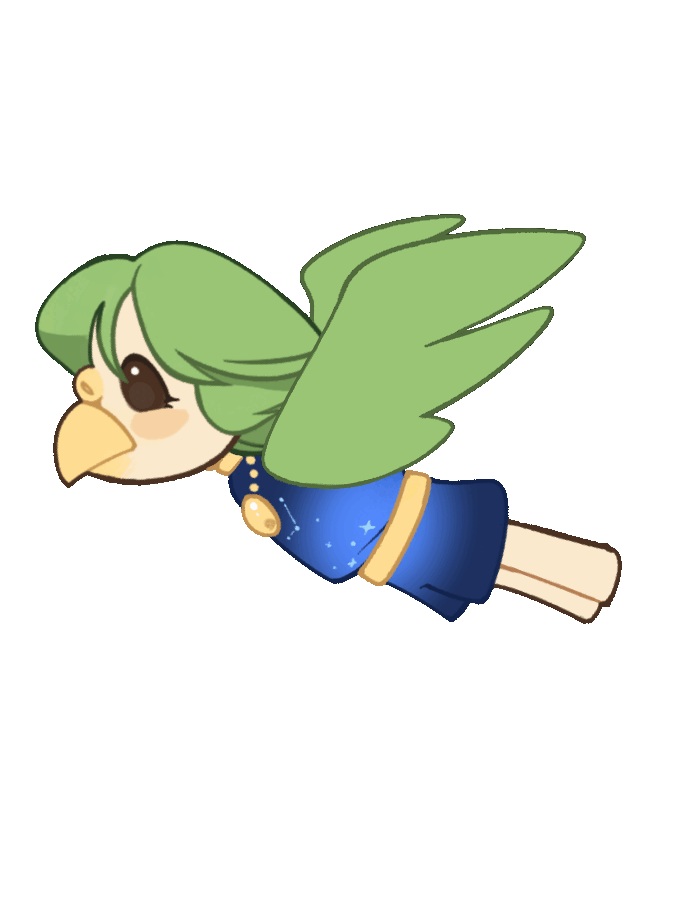
Alina animations - Walk (final), Fly (final)
Gameplay Design & Unity Development
My role in the project was initially slim, providing additional art assets as a "freelance" artist to bolster the lead artist's work. Upon officially joining the team in the second half my responsibilities would widen drastically in order to help rework the game into a demo level more feasible for us, and more enjoyable for players. By this point the deadline was a little over two months away and they realized much more work was needed on the game itself. Work had already been done to implement basic movement and dialogue interactions, but they had been struggling with making it fun to play. Lyra could walk and fly, but her movement was sluggish and the flight was limited to a linear upward force. The only challenge to the level consisted of several platforms to jump between. Having had prior experience working in Unity in a personal capacity, I offered to make a small "movement demo" for review, and they could decide whether to move forward with it and essentially "restart" development.
I made multiple prototypes for the flight mechanic, eventually settling on a system of individual wing-flaps which operate like a conventional "double jump." Pressing the jump button while in the air has Lyra flap her wings once, giving a strong thrust upwards. The intent was for Lyra to gain additional "flaps" throughout the game, which we felt was important to include within the demo. We wanted some level of complexity to her movement that would allow for interesting challenges.
Lyra's movement set
Fly - Lyra flaps her wings once, pushing her upward (1 stamina cost)
Dash - Lyra throws her wings behind her, pushing her sharply forward (1 stamina cost)
Glide - When out of stamina, Lyra can hold her wings out to smoothly glide downward
Star boost - Lyra spins upward upon "lighting" a star, refilling her stamina
My full responsibilities as lead developer involved creation and design of the movement systems, major level components (collision detection, killzones), and interactable elements (stars, puzzles, character upgrades, checkpoints). The other major systems (dialogue, cameras) were created and implemented by our secondary developer.
Level Design
In designing the demo level, one of the main points I wanted to convey was a sense of progression. The intent was to make sure the player would feel accomplished without the traditional level-transitions of a complete game, and it was important to make an impression quickly to hold the attention of exhibition-goers. From the first draft onward I designed for the visuals to work in conjunction with the level structure, separating it into 4 sections.
The player is immediately rewarded upon completing the first section with a wide vista as they break through the clouds. The visuals change as they continue upwards with each major section featuring a shift in level mechanics, challenging them to put all they've learned together. Where the beginning of the level has them breaking out of the cloud layer, they ascend into a gradually darkening sky until the stars peek through, signaling that Lyra's "manifest" draws near.
Creating environment art for the entire stage was well beyond our scope, so we settled for using a paid asset pack off of the Unity store. Given that the level itself was being created and tested at the same time we started the art pass, the modular art components drastically allowed for changes to be made quickly.
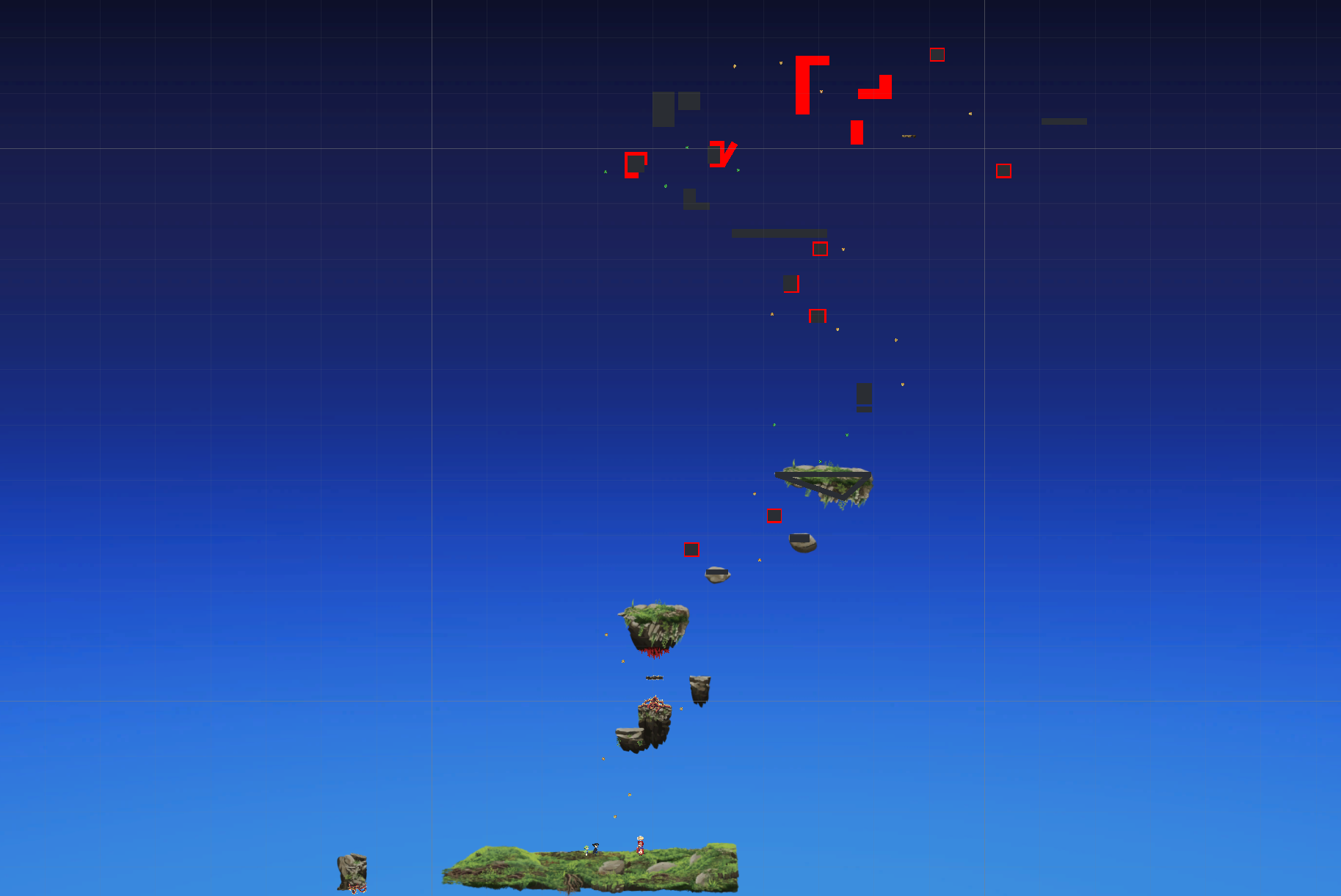
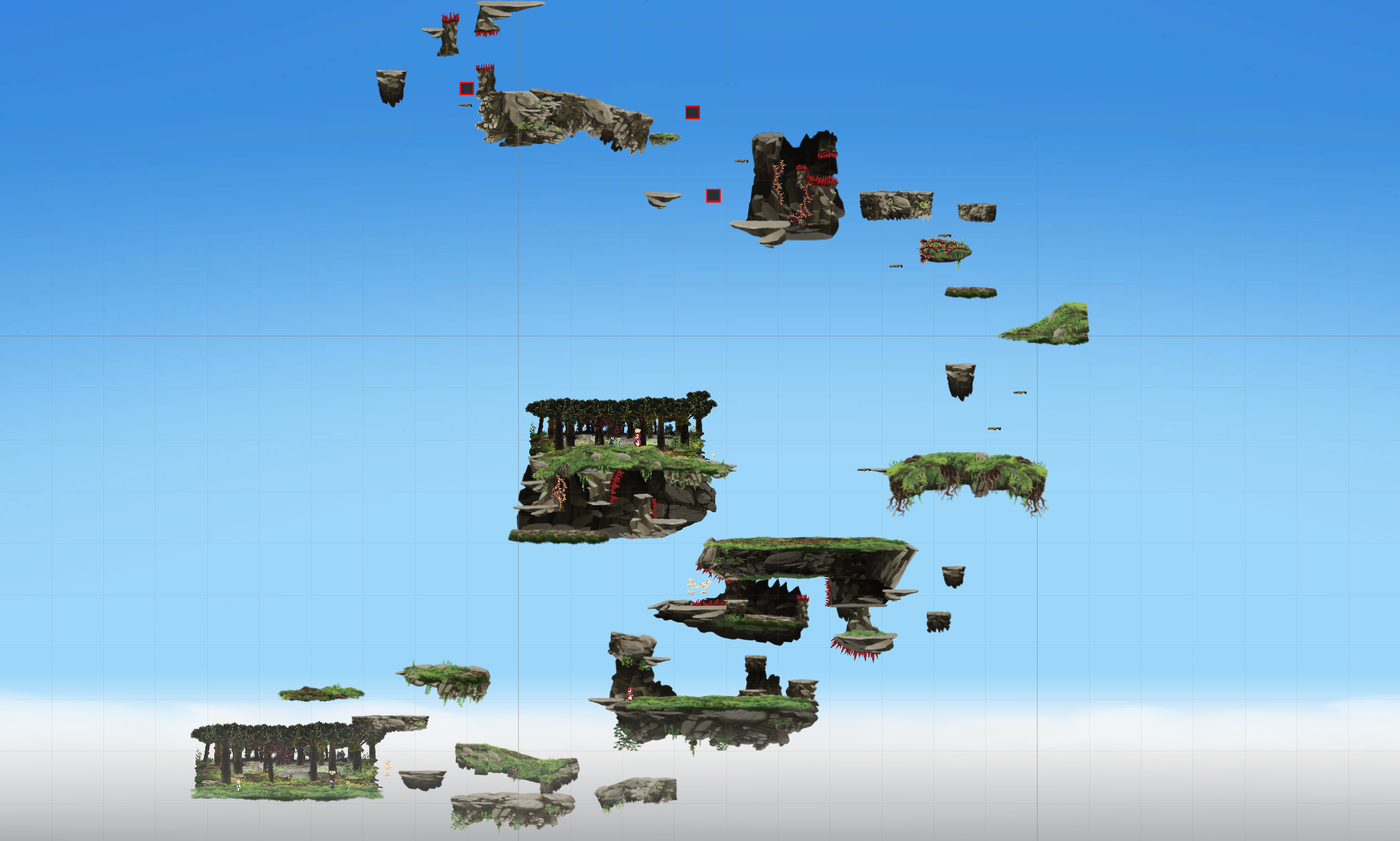
Finalized level layout
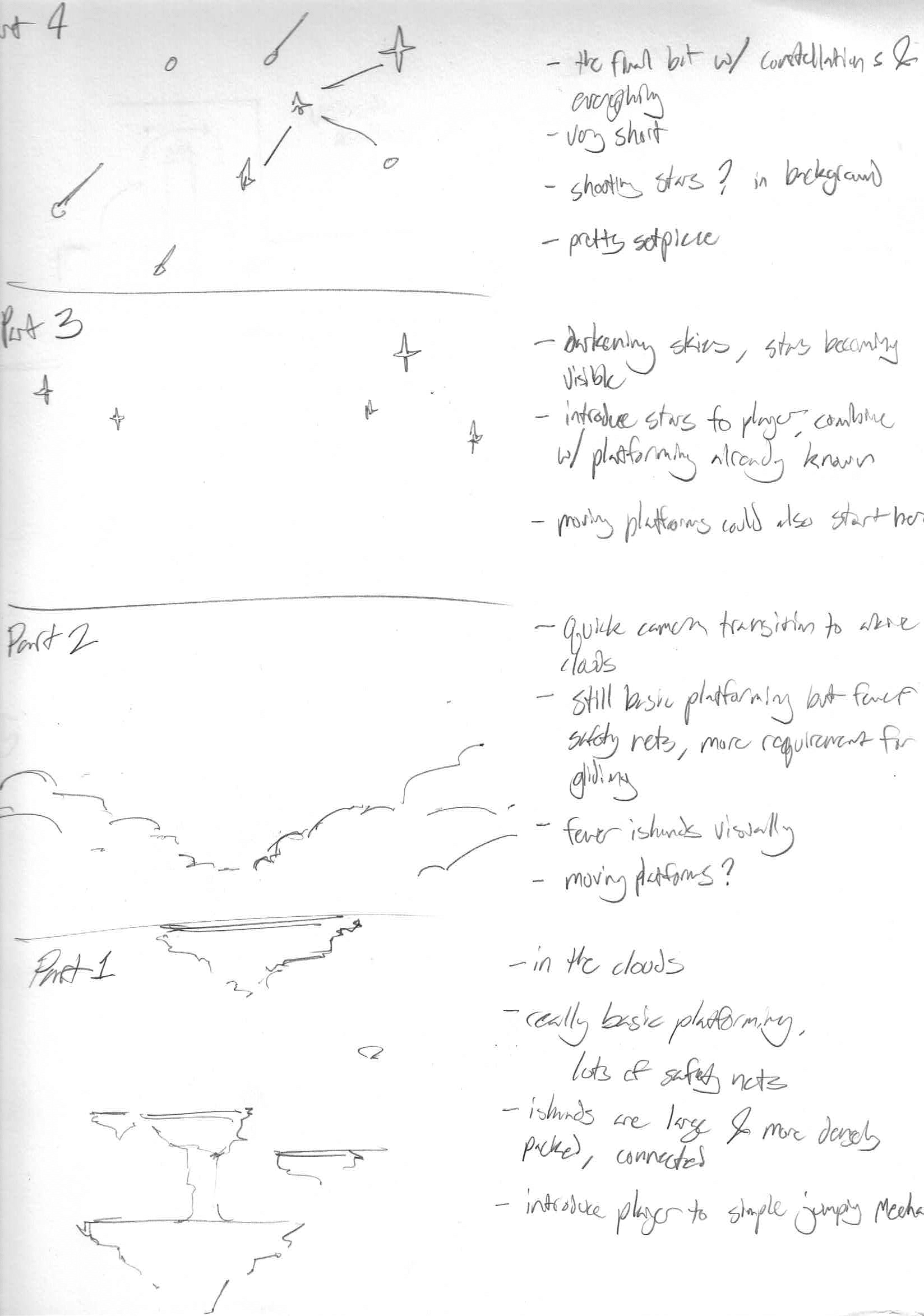
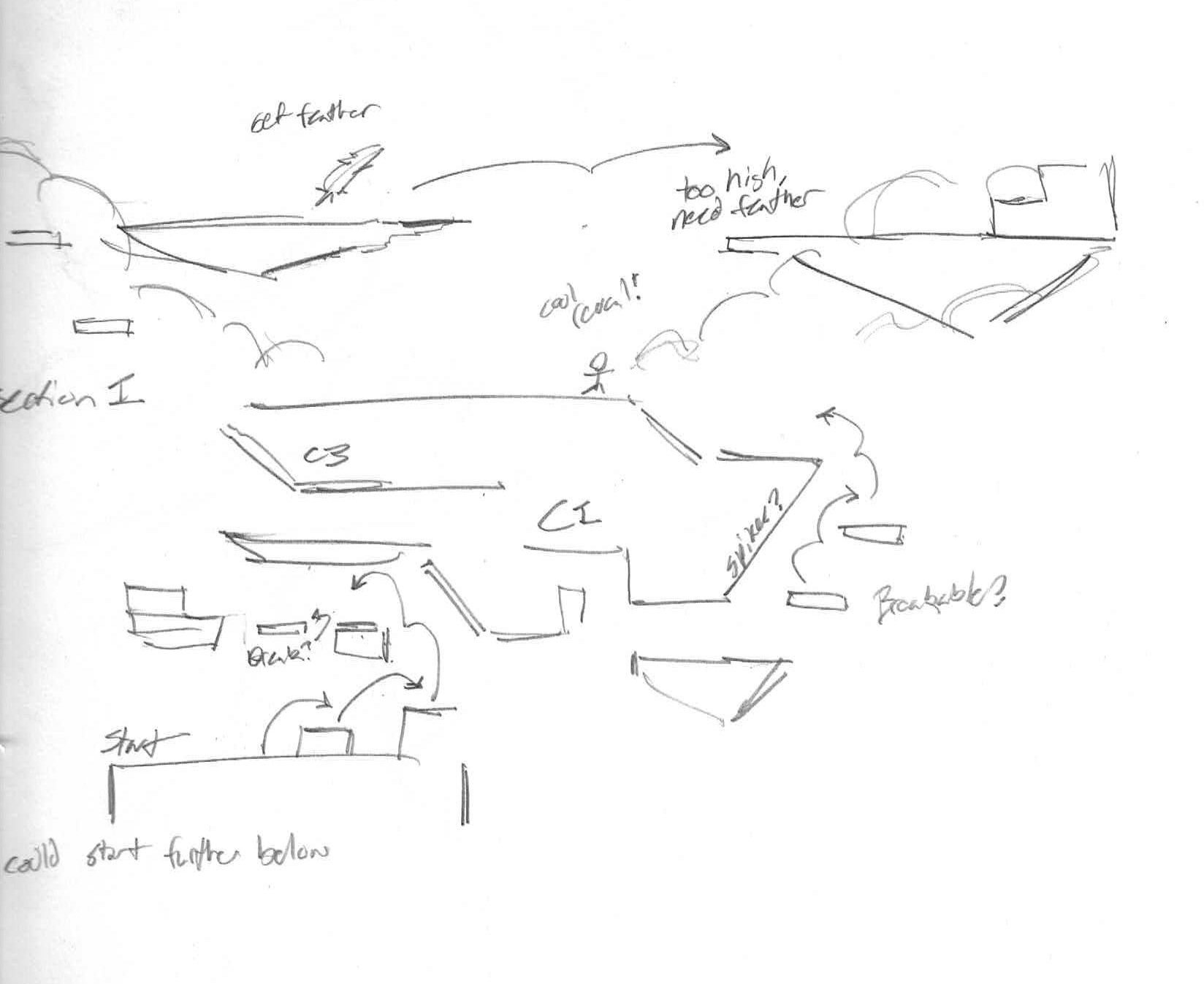
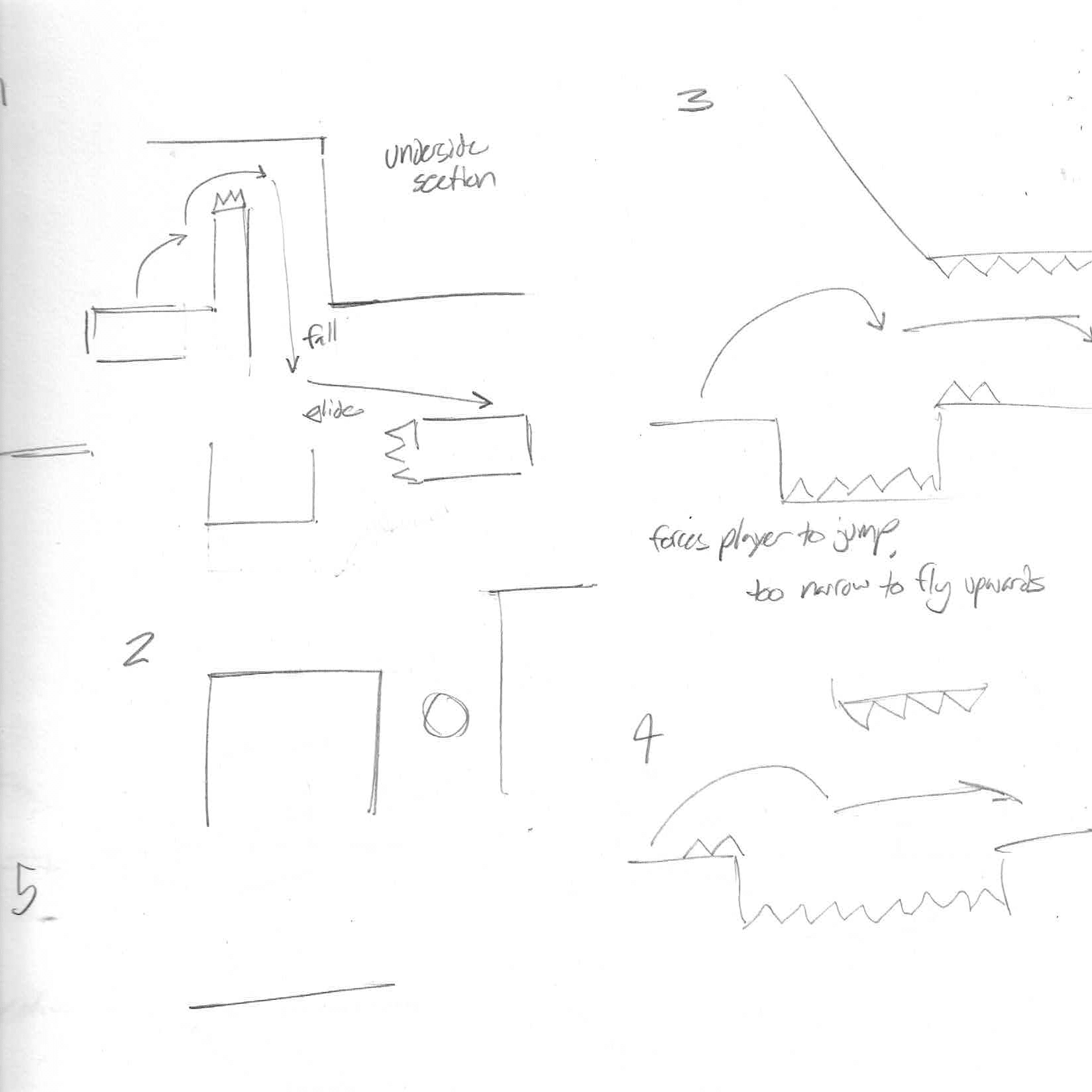
Early demo ideation sketches
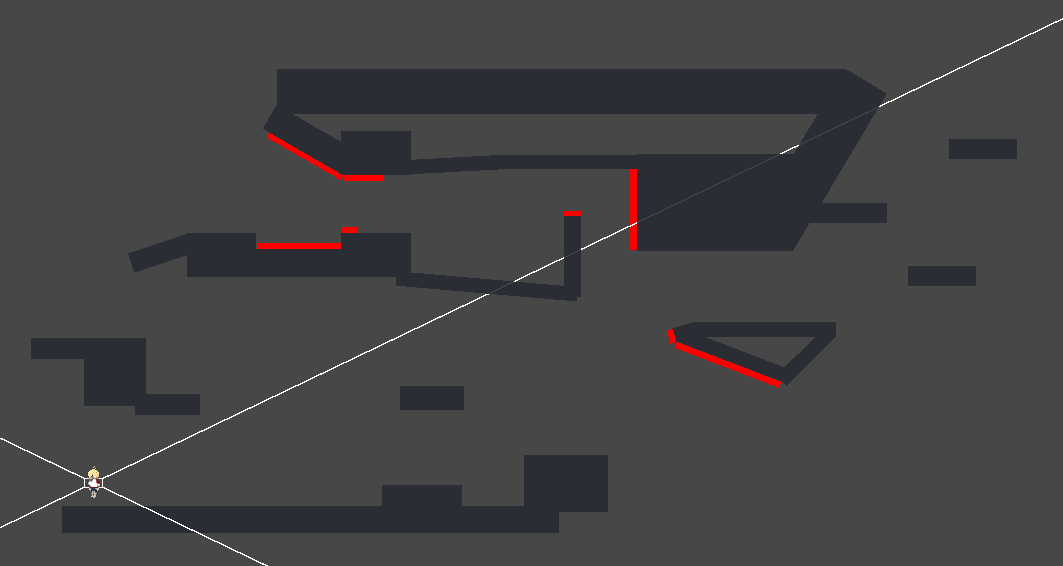
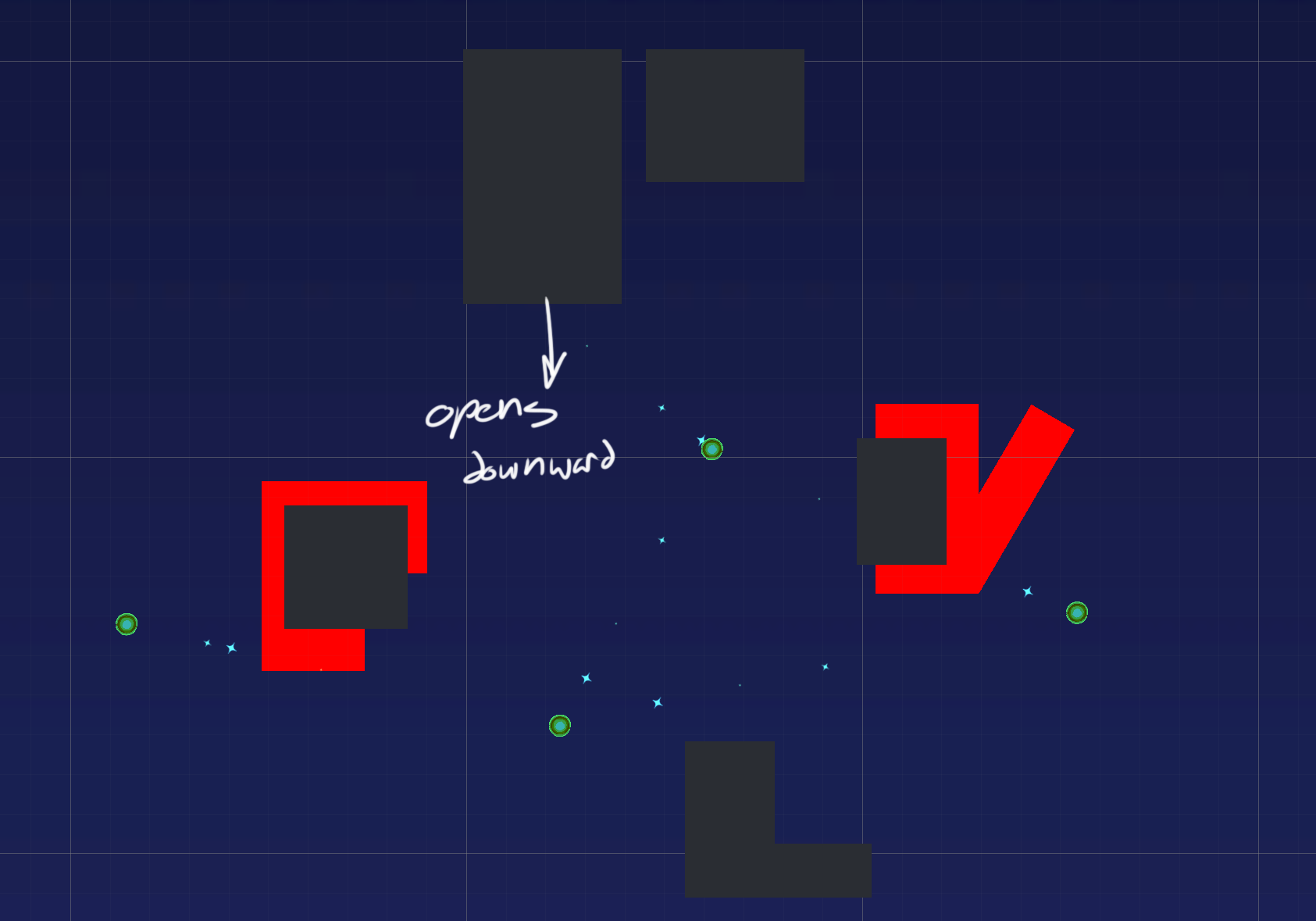
Rough level block-outs

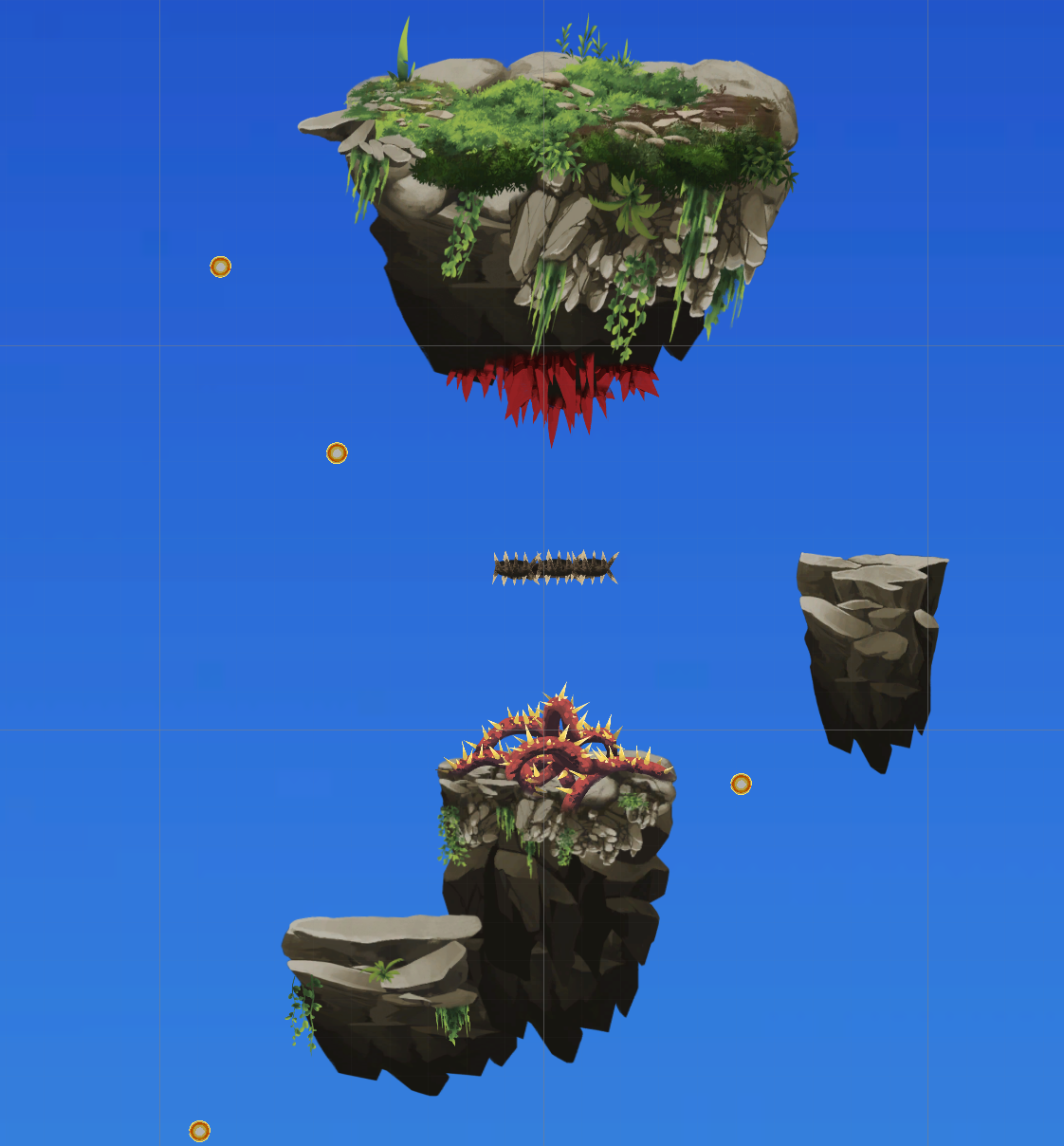
Final art pass
©2025 Thomas Novak

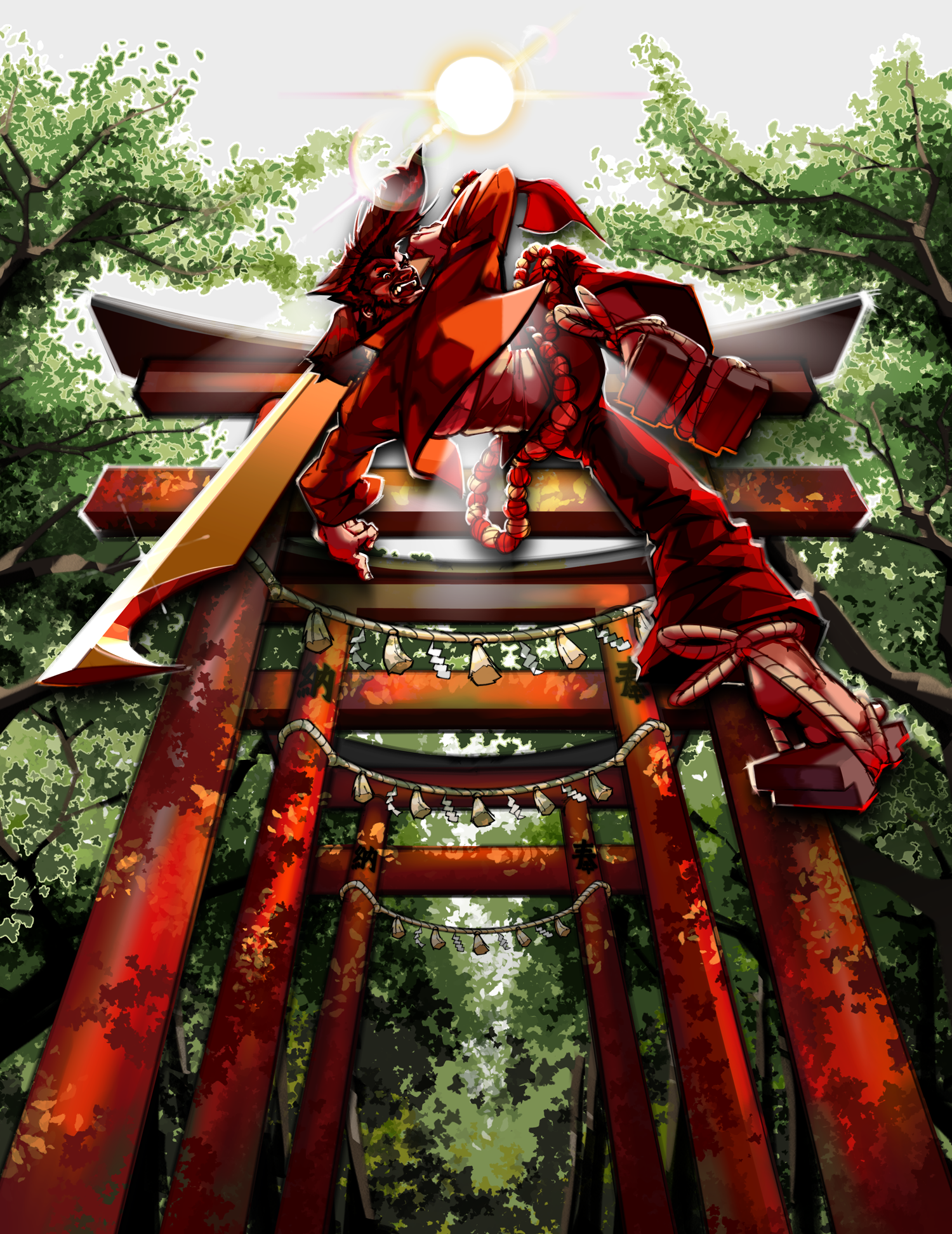
"Kurobune" is a personal game design project I took on as an independent study back in early 2022 for credit in the Interactive Media Design program at the University of Washington Bothell. The process was relatively free-form as it was to be led by myself, with regular check-ins with an IMD professor who'd agreed to provide guidance. The initial concept for Kurobune, meaning "black ship," was for a first-person-shooter/brawler hybrid PC game, pulling heavily from late-90s PC shooters (Quake III, Shadow Warrior, Soldier of Fortune) and PS2-era action titles like Devil May Cry and especially the early Yakuza games. My main objective in this project was the creation of a game design document and assets, rather than full development work. I felt that it would be a great exercise to get things solidified in a proper design stage that I could then refine, rather than letting ideas sit on paper or just in my head.
The game was to take place in an alternate-world 1860's Japan where the Japanese isolationist period is broken by the arrival of a black warship from the Confederate States of America. The player, a wandering rōnin named Jiro, is caught in the middle of a multi-pronged conflict between the ruling Shogunate, rebel forces loyal to the powerless Emperor's rule, and eventually a full-scale American invasion. Jiro is loyal to no party except himself, but soon finds that there's far higher stakes than expected- and a higher payout to be had.
Gameplay was to be heavily focused on melee combat and movement, Jiro's moveset itself being an important part of the player's movement in combat. Jiro's sword is heavy and I really wanted that to be conveyed through gameplay- he can be agile on his own, but that sword requires a lot of intent to use properly. One missed swing can leave him wide open. The sword was to be restricted to heavy attacks, while light attacks involved Jiro's fists. To get the most out of this moveset, the player would need to properly combo light and heavy attacks to wear enemies down, hit them hard when they're vulnerable, and learn to work with the sword's weight to move quickly.
Character design
The player character Jiro was an original character of my own well before working on this project, but it gave me an opportunity to refine his look to fit the more fleshed-out personality he'd been given. Almost everything about his look was changed besides the distinctive pompadour and mutton chops. I wanted him to look sort of gaunt in a lean-muscly way, almost malnourished- he definitely doesn't eat as well as he should. He's not exactly a hero or anything, he had to look sketchy and out-of-place. The clothes are a weird modification of a traditional wear of the time which he's clearly cut to suit him better. I felt that the tall, popped collar of his coat provided some interesting balance to the huge pomp. Jiro's design has been changed a lot since my work on this project ended, but the outfit established here has persisted.
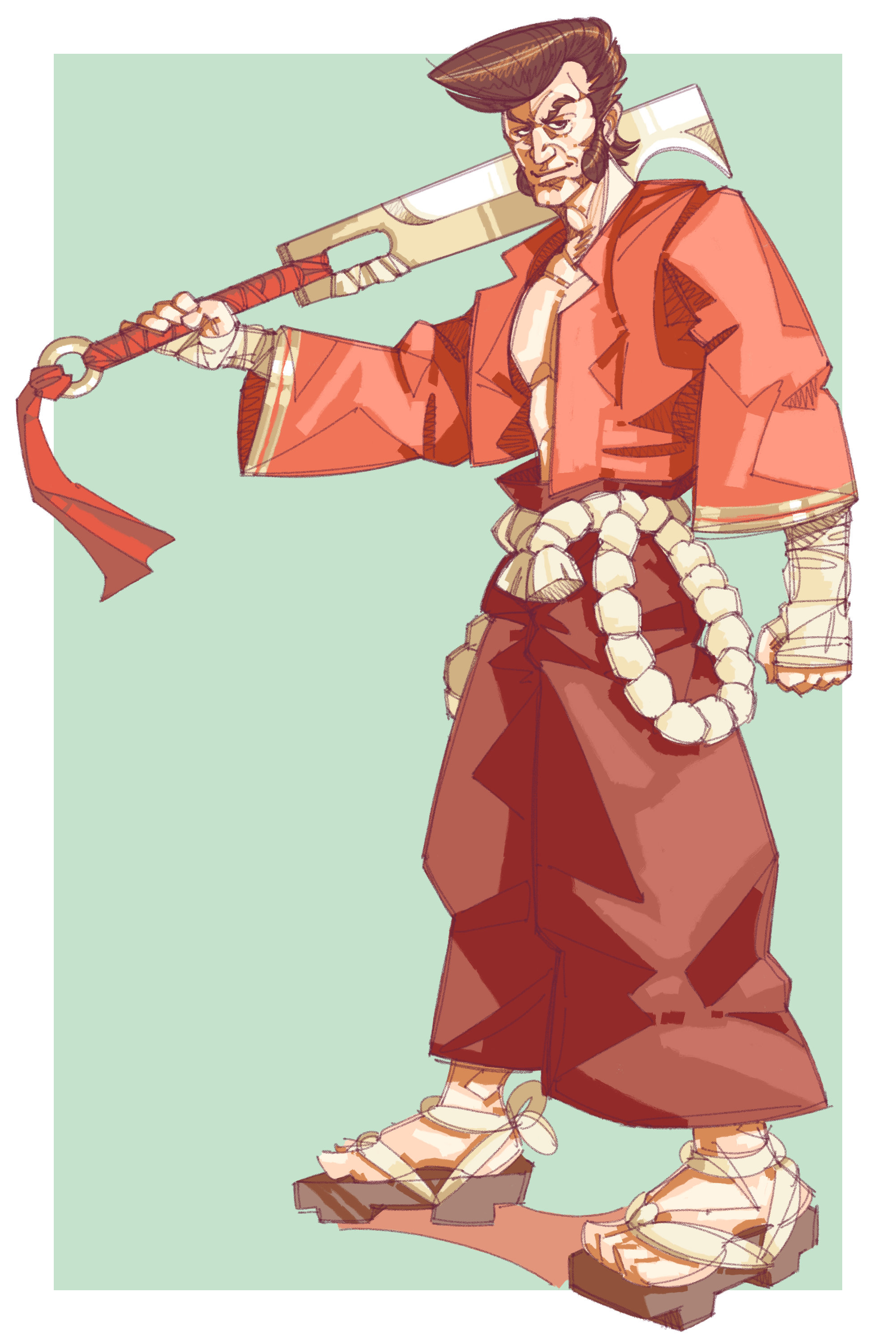
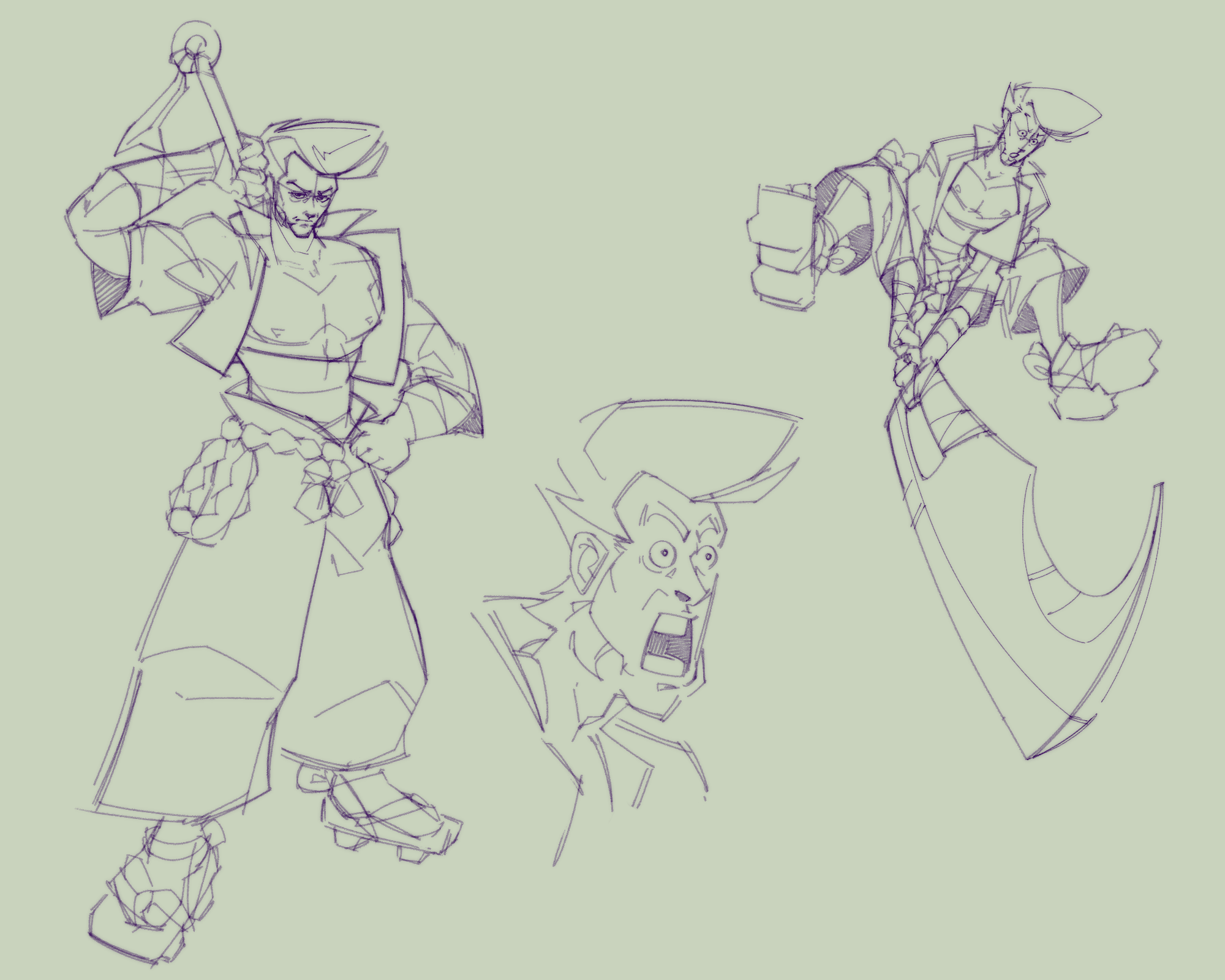
The Tengu gang serve as the game's basic enemy faction, the first that the player meets and learns to fight against. These guys are a barely-organized group of bandits who trawl around beyond the watchful eyes of the shogunate, taking what they want from vulnerable villages and moving on. As such I wanted to portray them in a properly ragtag light, wearing simple farmer's or fisherman's clothes with their distinctive tengu mask to signify their affiliation. They don't have anything special, just intimidation and numbers on their side.
The most basic enemy, the Tengu grunt (left) was designed to work in a group. They carry a sickle and will try to rush up on the player to deal some damage, running away again to try and bait an attack out. Easily taken care of on their own with proper timing but they can pose a serious issue when paired with enemies that require more attention.
The Tengu brute (center) serves to withstand and to deal heavy damage. They're not particularly difficult but will put up more of a fight than the grunts, requiring the player to back off when they see or hear their heavily telegraphed attacks.
Tengu warriors (right) are the first enemy that'll challenge the player's skill so far, acting as a mini-boss in the first level. Their form is tall and lean, clearly distinguished by their tall horns and the flail which hangs behind them in standard posture. Warriors keep their distance from the player and wait until they're vulnerable, attacking in short bursts with good damage. The flail gives them far more range than any other enemies in the Tengu, but they'll have long recovery periods after attacking. This is the player's chance to get in and deal damage.
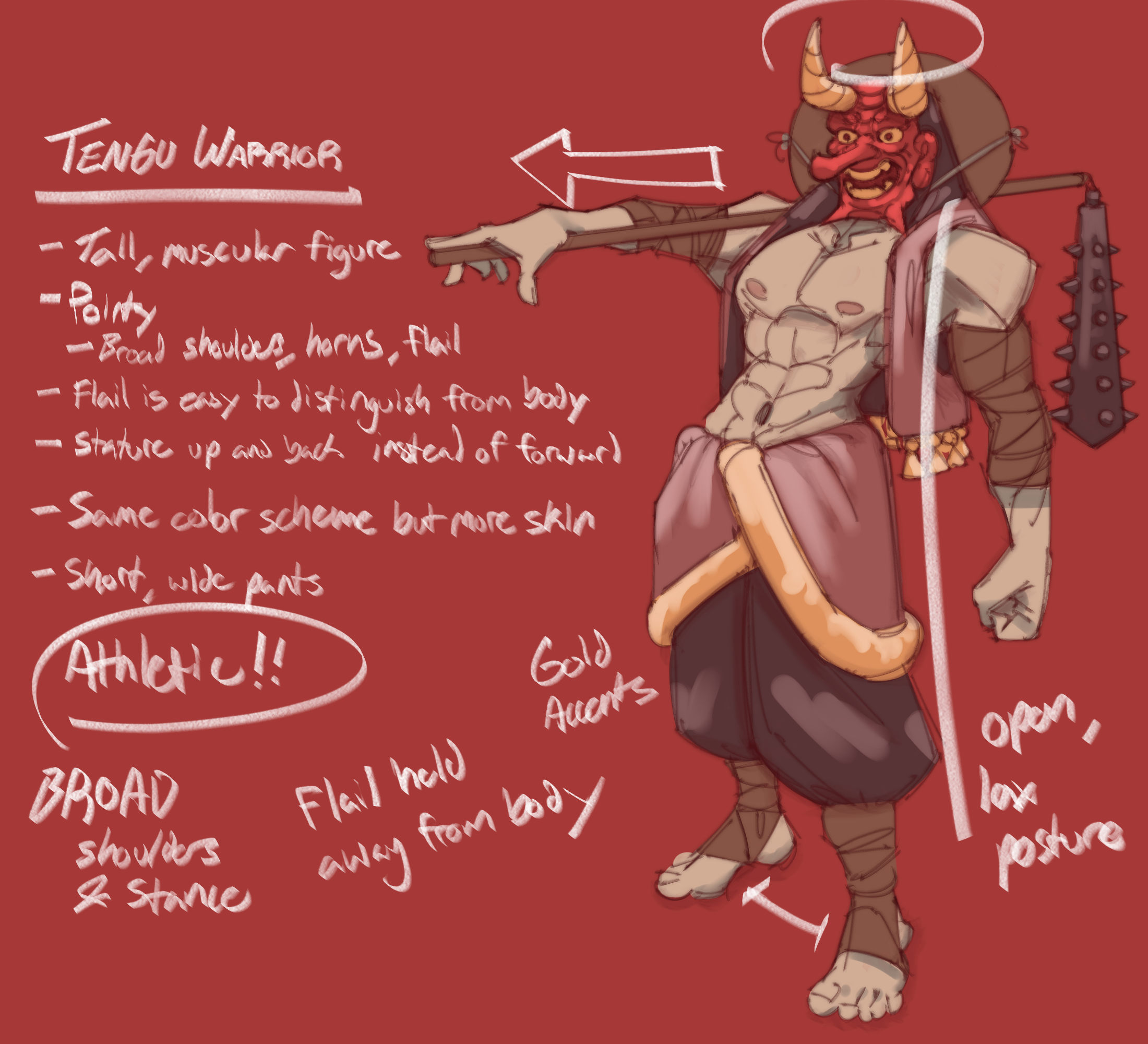

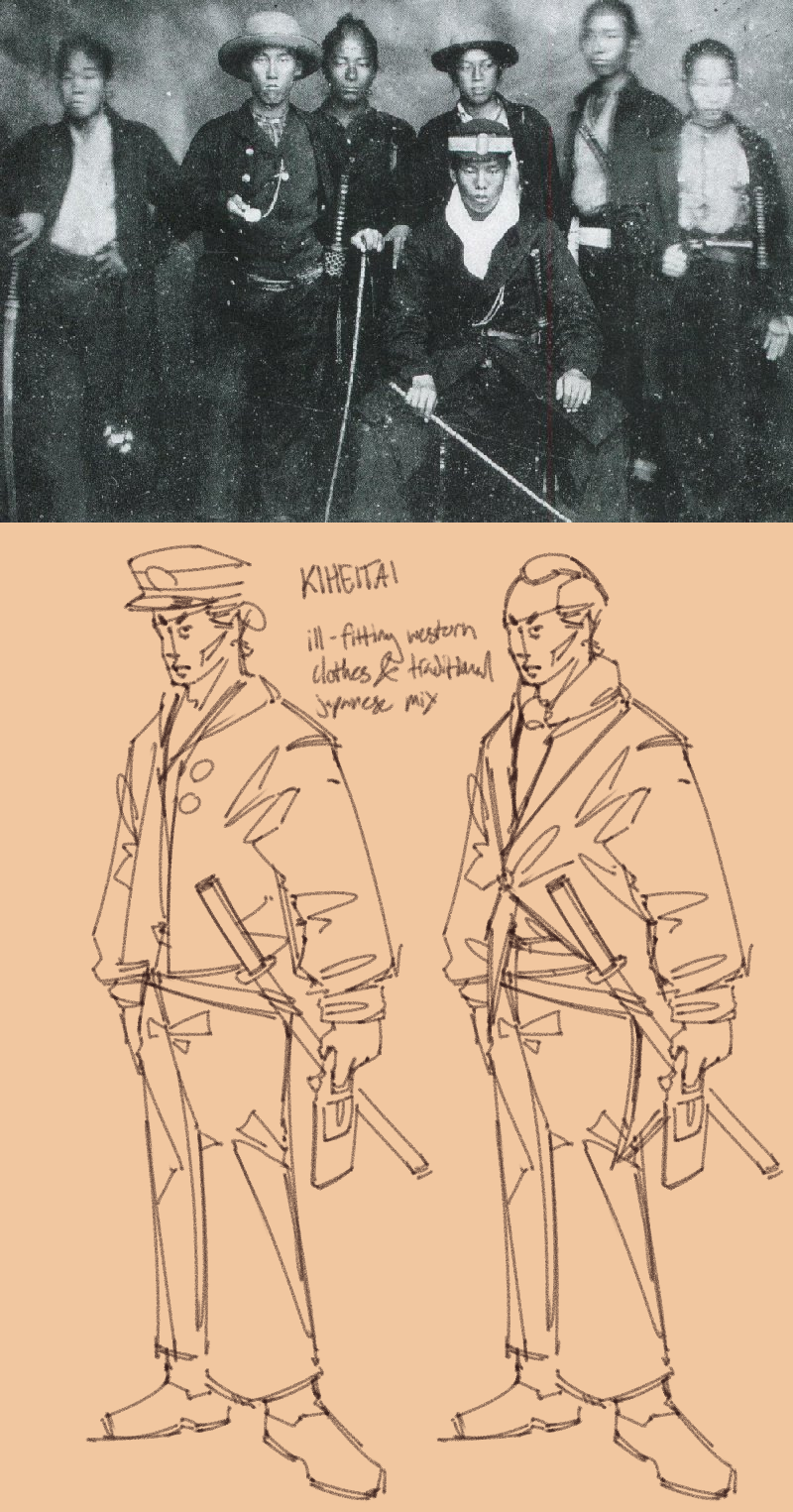
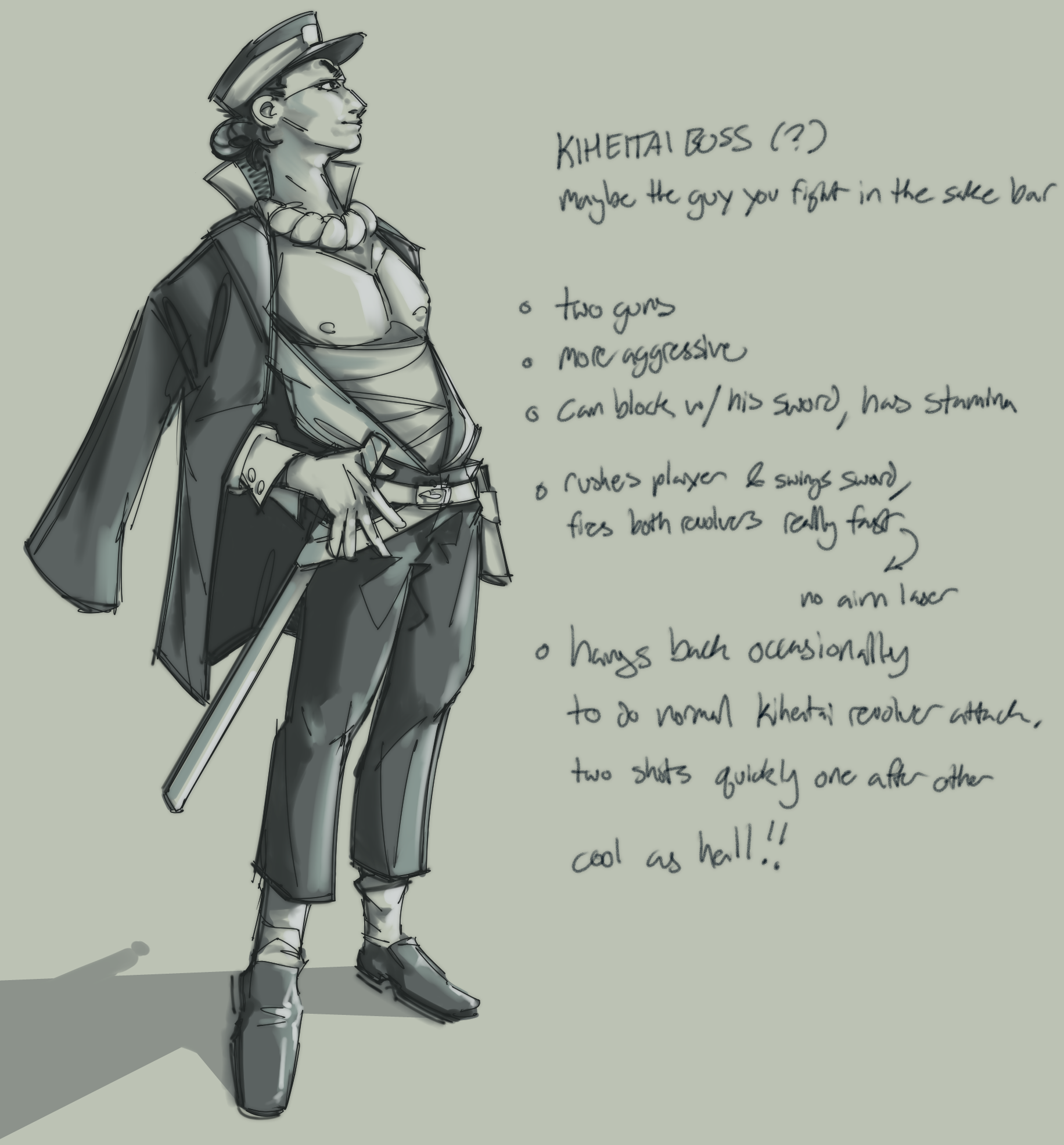
The historical Kiheitai were a grassroots militia group loyal to the Chōshū Domain, who utilized Western tools and tactics to fight against the ruling Tokugawa Shogunate. In-game they would functionally represent the introduction of the gun to the player's moveset, while also setting up the central conflict of Western influence in the political sphere. These enemies would immediately stand out from the Tengu both visually and in their combat styles, utilizing guns and generally being more agile. They're still a very loose organization but certain commanding units could rally them together.
The Kiheitai "boss" was conceived as possibly a recurring enemy, someone who would form a grudge toward the player from his first defeat and continue to pursue them throughout the game.
Cutscene Storyboards
In planning how I'd want the first "mission" of the game to play out and introduce the player to the setting, I went ahead and created a couple storyboards. These span an intro cutscene and an end-cutscene which would lead directly into a mini-boss fight. The player would be shown a bit of Jiro's personality, his trouble-making nature, and maybe a bit of a good heart behind all the pomp. The bandits who would have taken over this old man's home would be the Tengu gang, giving the player a chance to learn the basics of combat and traversal. Upon their return they'd immediately have their reward stolen, Jiro's cockiness inciting a fight in the bar and introducing the player to the Kiheitai enemy faction and adding the gun to their arsenal.

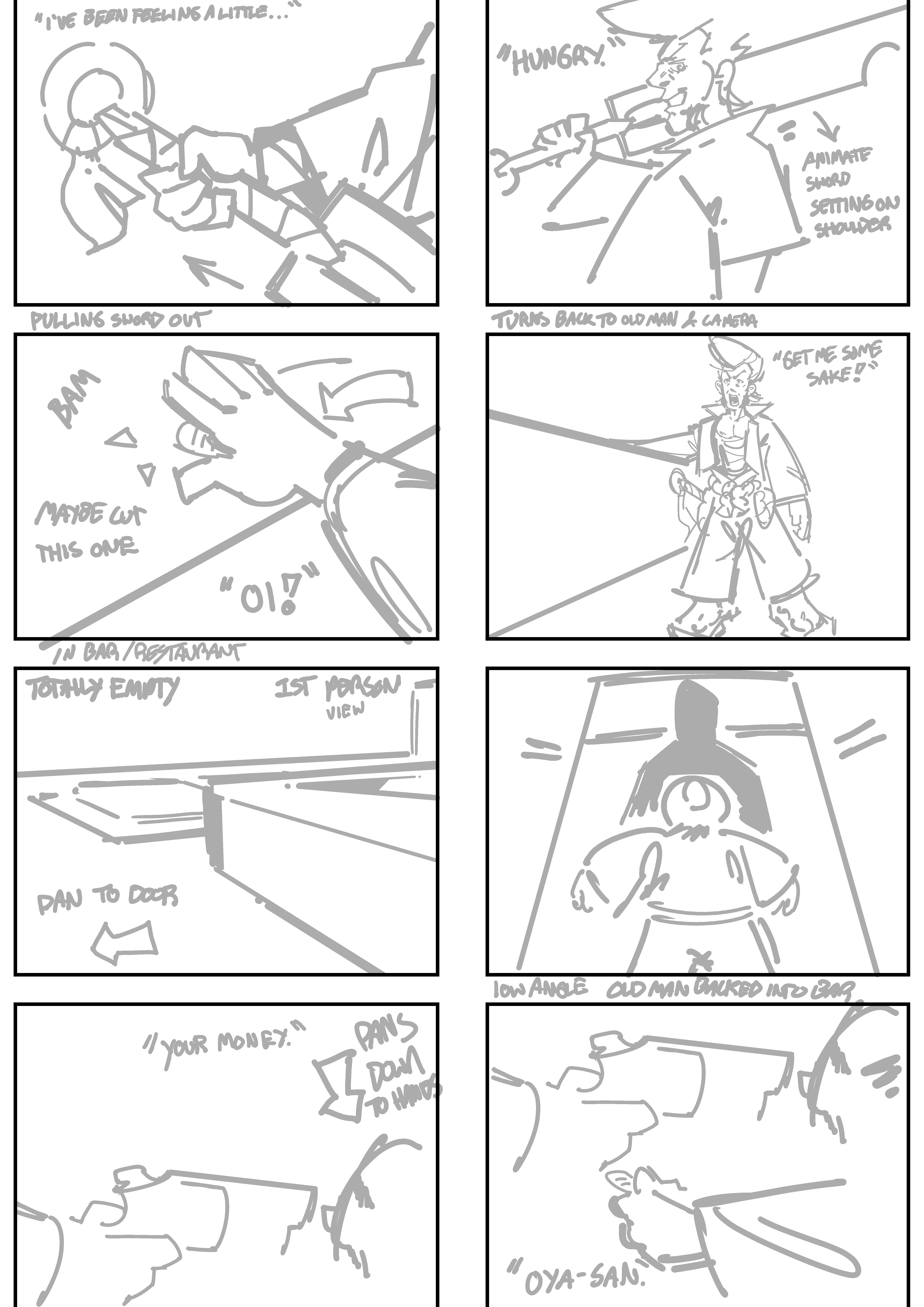
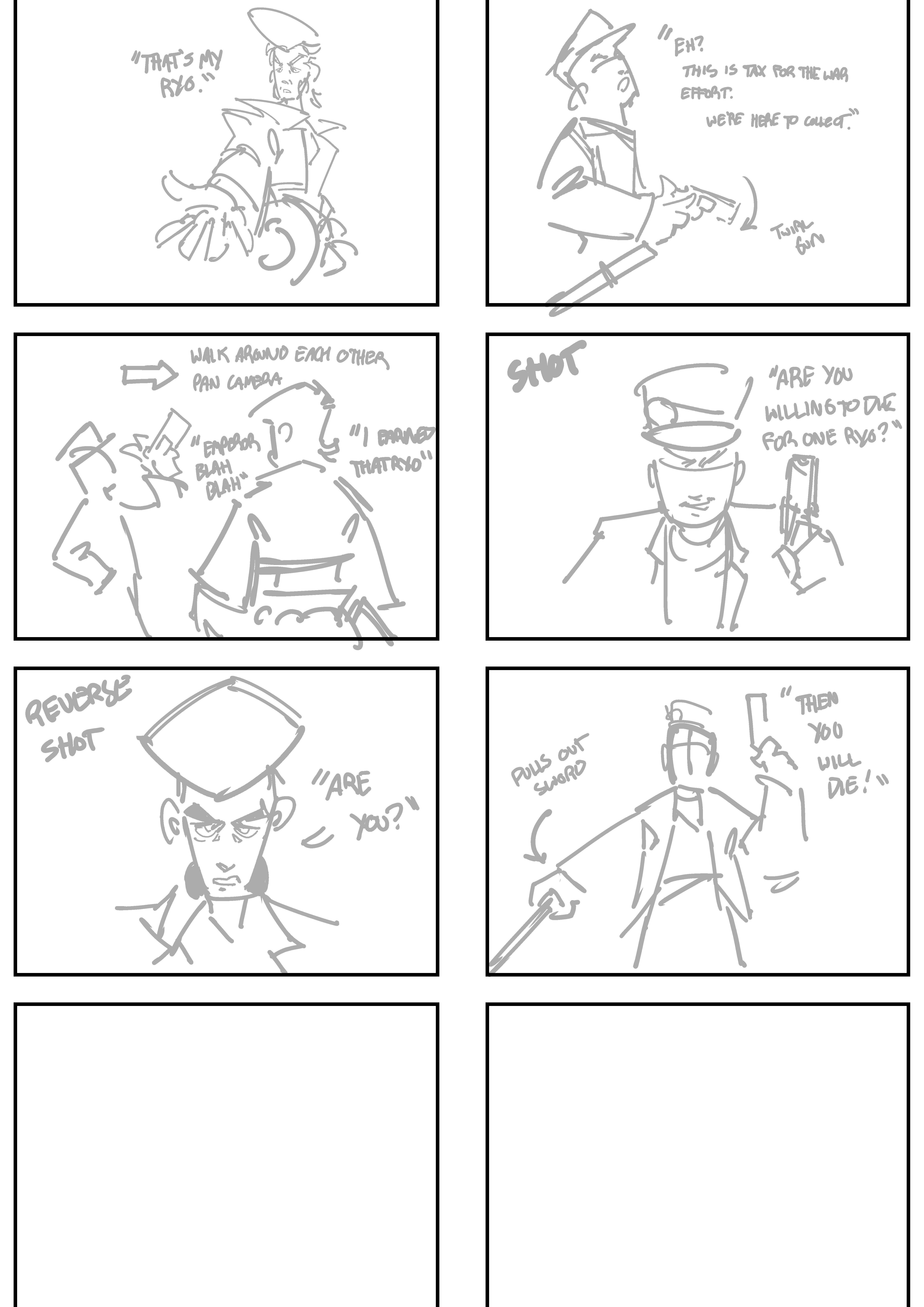
©2025 Thomas Novak
Character Design
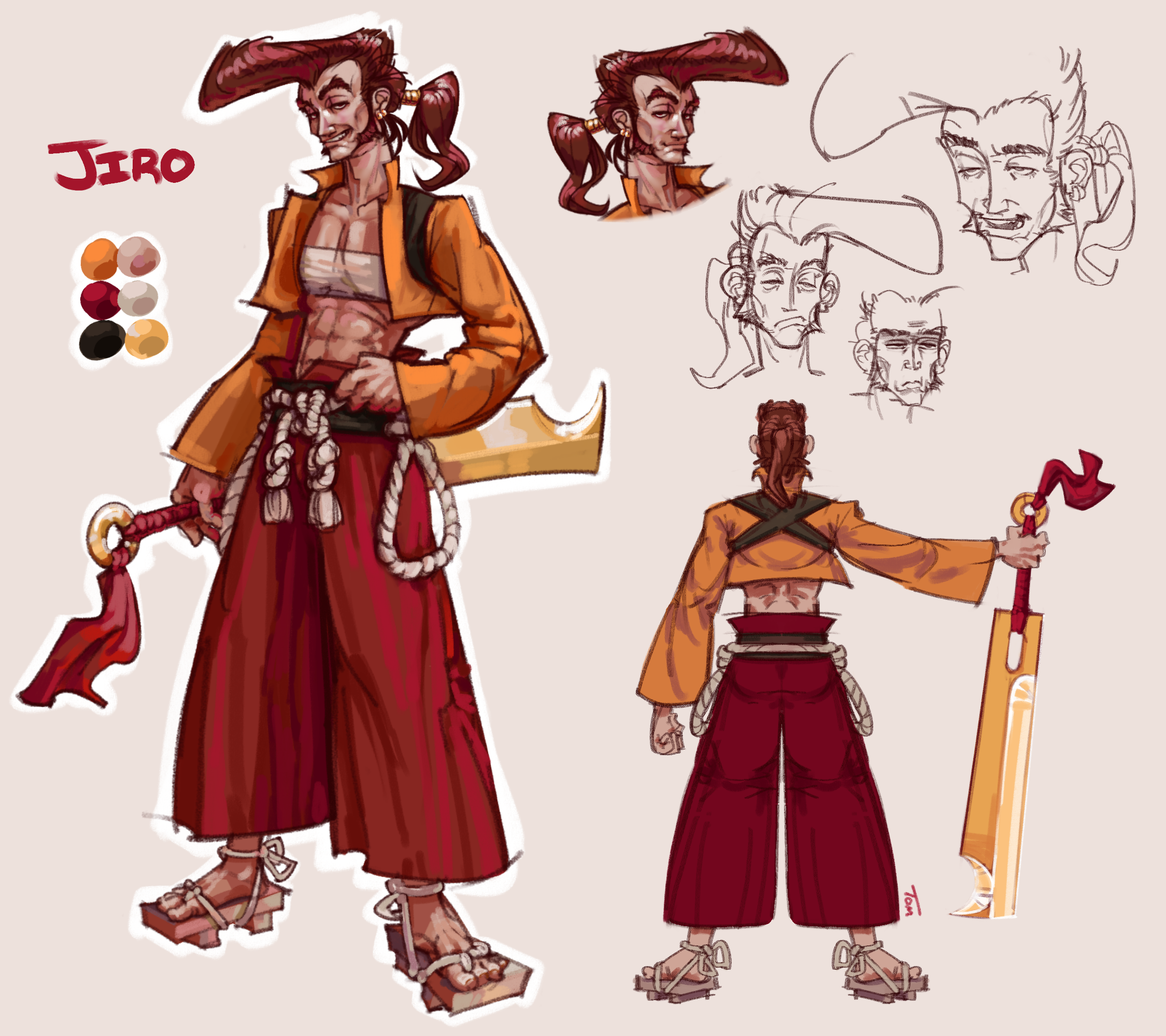
Jiro is an original character of mine also featured in the "Kurobune" project page, shown here in his most current design. It doesn't stray too far from his look established a few years ago but I've gradually refined it as my art skills have developed into something I feel represents his core concept better. This reference sheet was created for participation in Artfight.
Jiro himself is cocky and excitable, a bit of a lay-about when nothing's going on. He works for money as much as he needs to get by. As such, he's gradually gotten leaner as my art's improved- I used to have a lot of trouble with making the human body very chunky whether or not I wanted to. I wanted to portray that kind of feeling in his expressions and demeanor, keeping his eyes very low and lazy but with an expressive brow.
You'll see in the process photos below that I had done a complete render in the exact same outfit as before, and while artistically I felt proud of my work there was a nagging feeling that he needed some work on his outfit. I'd really liked his ball-shaped belt based on traditional Japanese "Shimenawa" but every time I drew it, it would bug me with how much it didn't make sense. There are no clear knots to form the front connection or the loops on his hips. In addition, without any bold lighting his color scheme just felt too homogenous- bright orange, bright red, pale white, and yellow tones. My frustrations with this now old design led me to make some revisions. I researched some actual knots to design a more realistic rope belt he might use, and gave the outfit some dark accents for visual interest. The fabric beneath his belt was meant to evoke the look of a Japanese Obi sash.
Process images
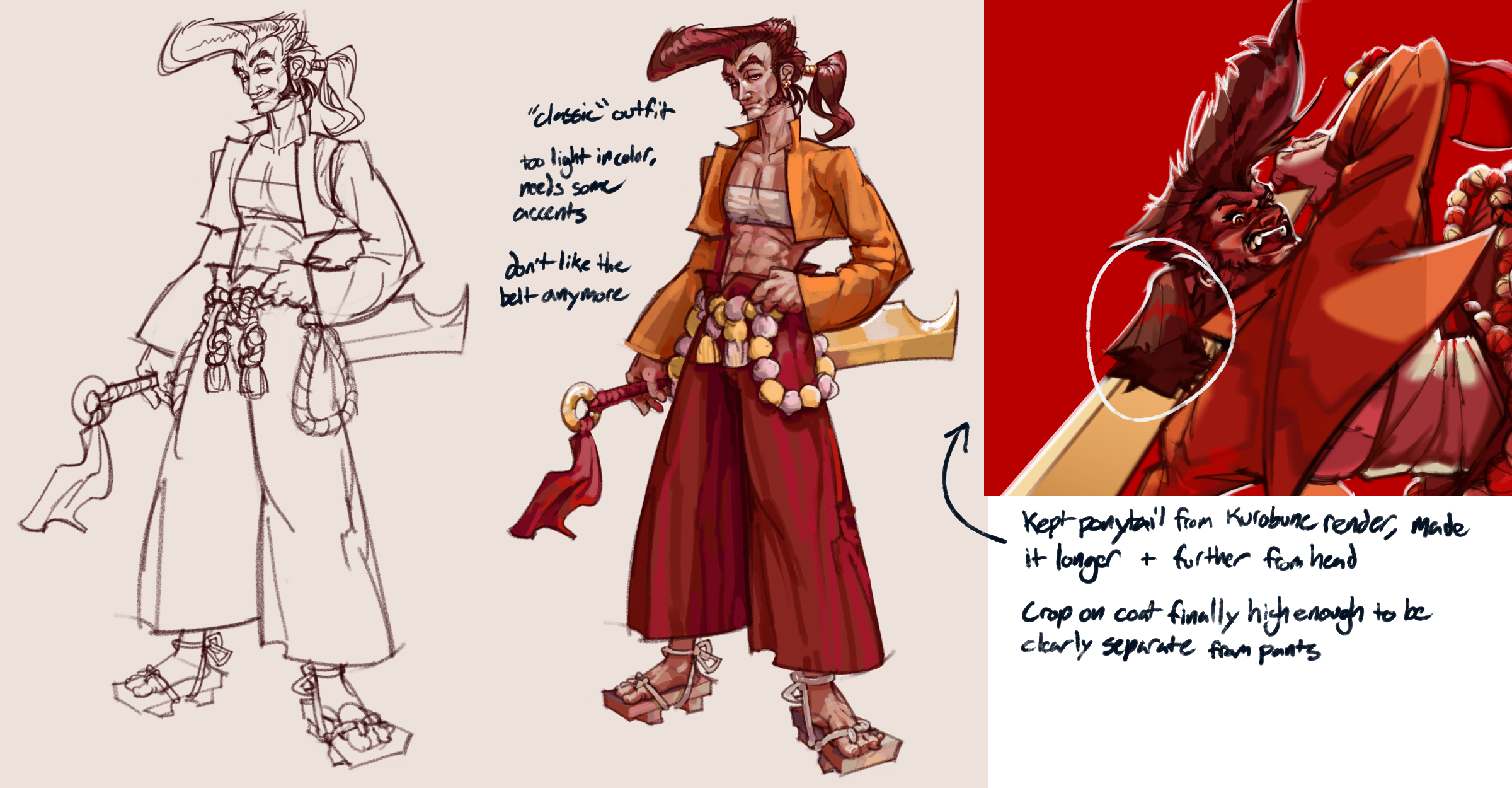
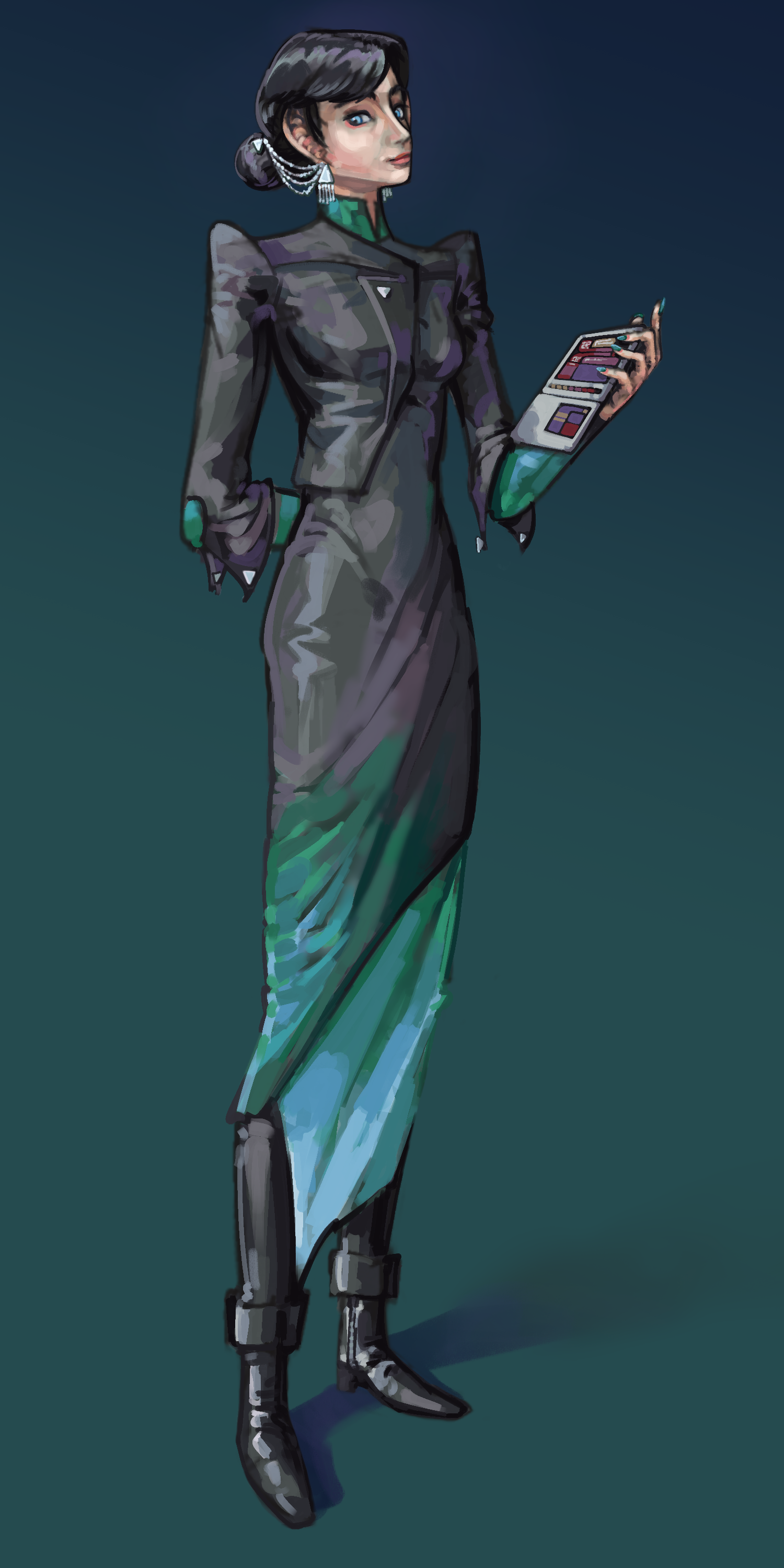
This was a commissioned work for the commissioner's original character, who to this point did not have a consistent design. They provided some in-game screenshots from a character creator and gave a general overview of her personality, along with some key things they wanted included for the design. The character is described as strict and domineering within her high military role, but with an eye for fashion. I wanted to keep that authoritarian military-uniform feeling to it while also giving it a refined and elegant design. The existing world which she fit in provided some reference for fashion to start from.
The outfit itself was completely open for interpretation so I bounced several ideas/sketches off of them in order to find something fitting. We went through numerous rounds of sketches and concepts for the outfit, face, hair, and accessories before arriving at a design they were satisfied with. I made sure that her posture and expression convey an uptight yet pompous demeanor in line with her personality.
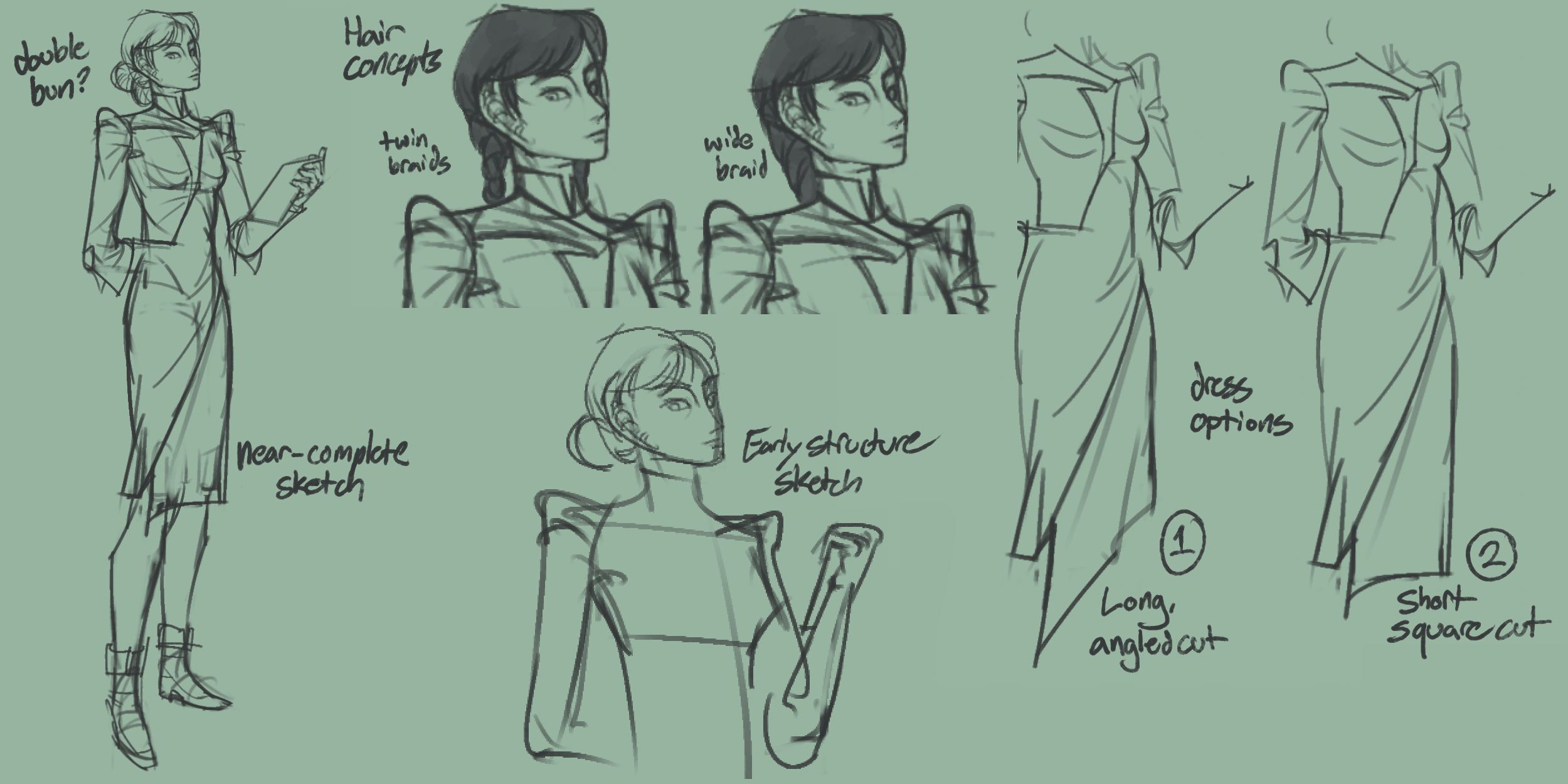

The "Deafened Lamb" is an original character of my own designed for use in a personal tabletop role-playing game campaign. In-world it's a synthetic creature designed to "host" the mind of a god and perform actions in the material on its behalf. I wanted to give it a very strange combination of rigid, abstract shapes and more recognizably human features. The "crown" evokes imagery of demonic horns to further accentuate the connection with mythological/godlike figures, while the hooves and flat nose-bridge are distinctly animal. It's sort of an approximation of the human form as a detached god-being might see one, human features that have been misinterpreted or
confused with other material creatures.
I pulled heavy inspiration from characters in the Shin Megami Tensei games in trying to make a character that hit the balance of half human-half demon. I feel I could go farther in making it something truly unique from that inspiration, but I'm proud of how it turned out considering how far out of my comfort zone it was- complex forms and especially lean characters have historically been difficult for me. This was a great exercise in re-learning some human structure and musculature on leaner bodies, as well as the visualization of complex forms in 3D space.
©2025 Thomas Novak
